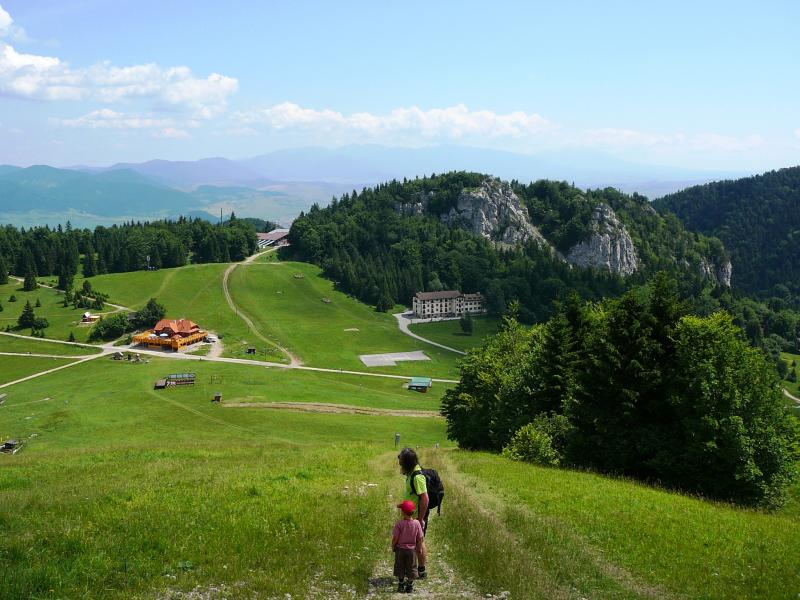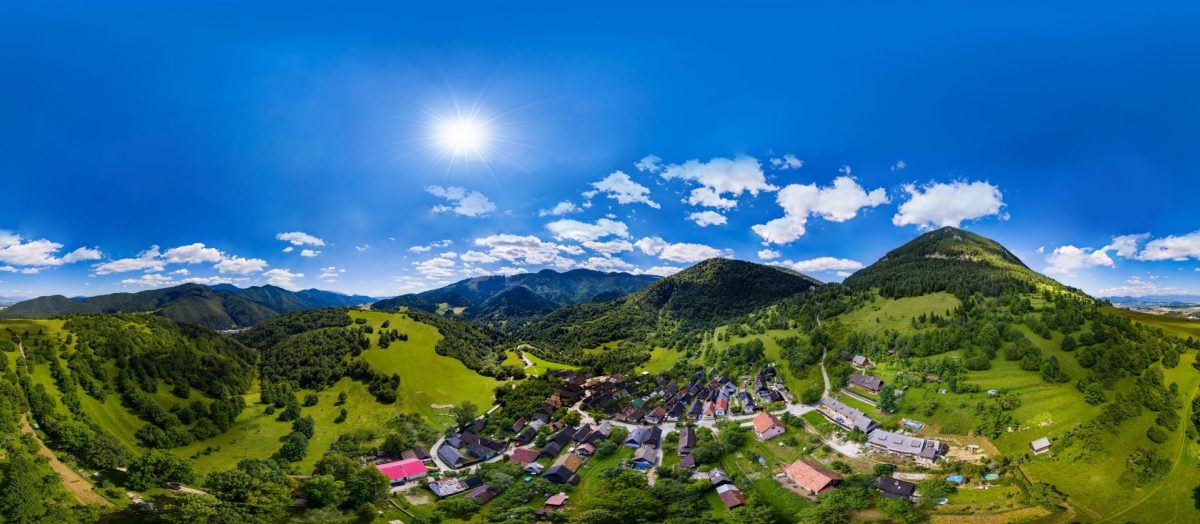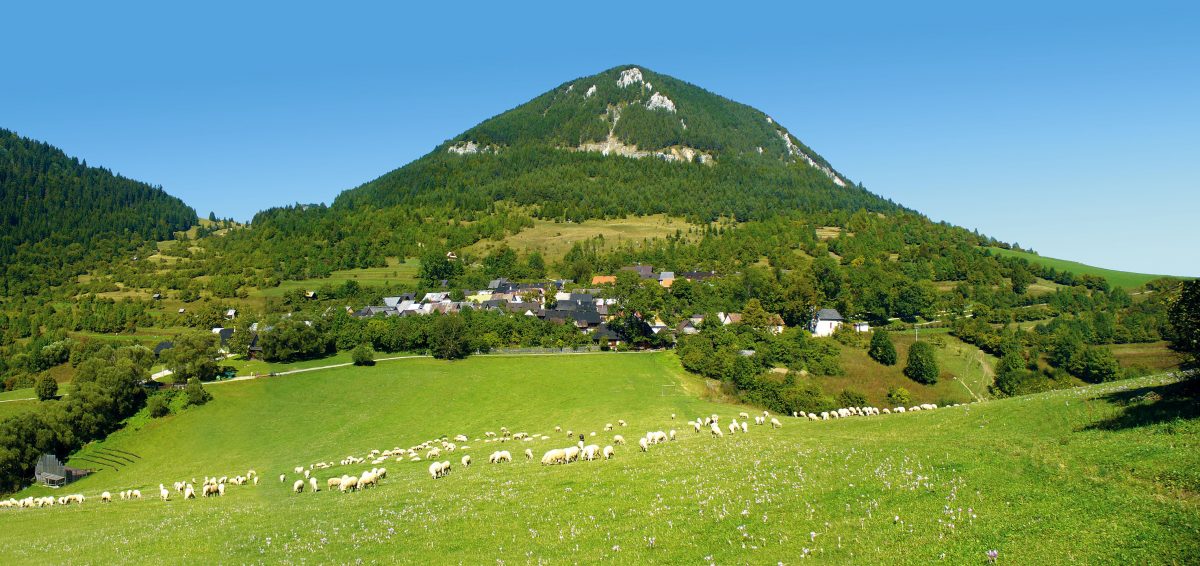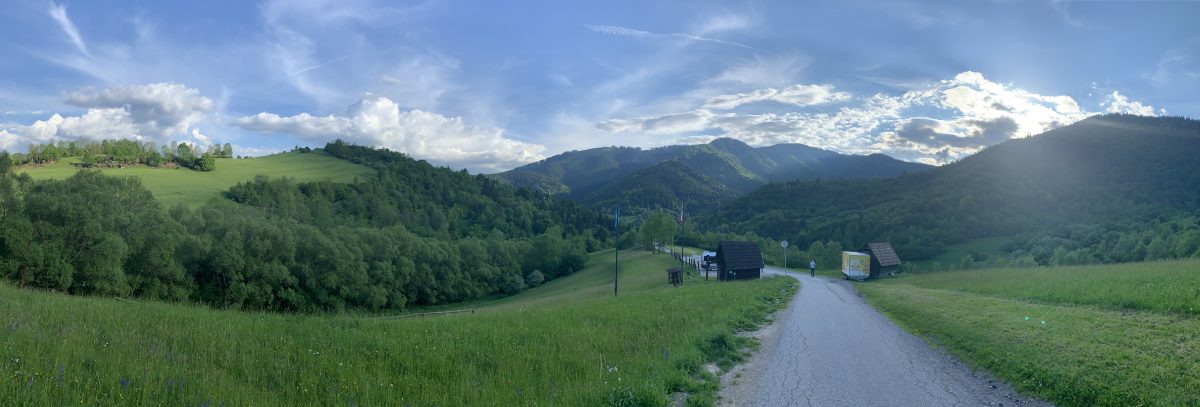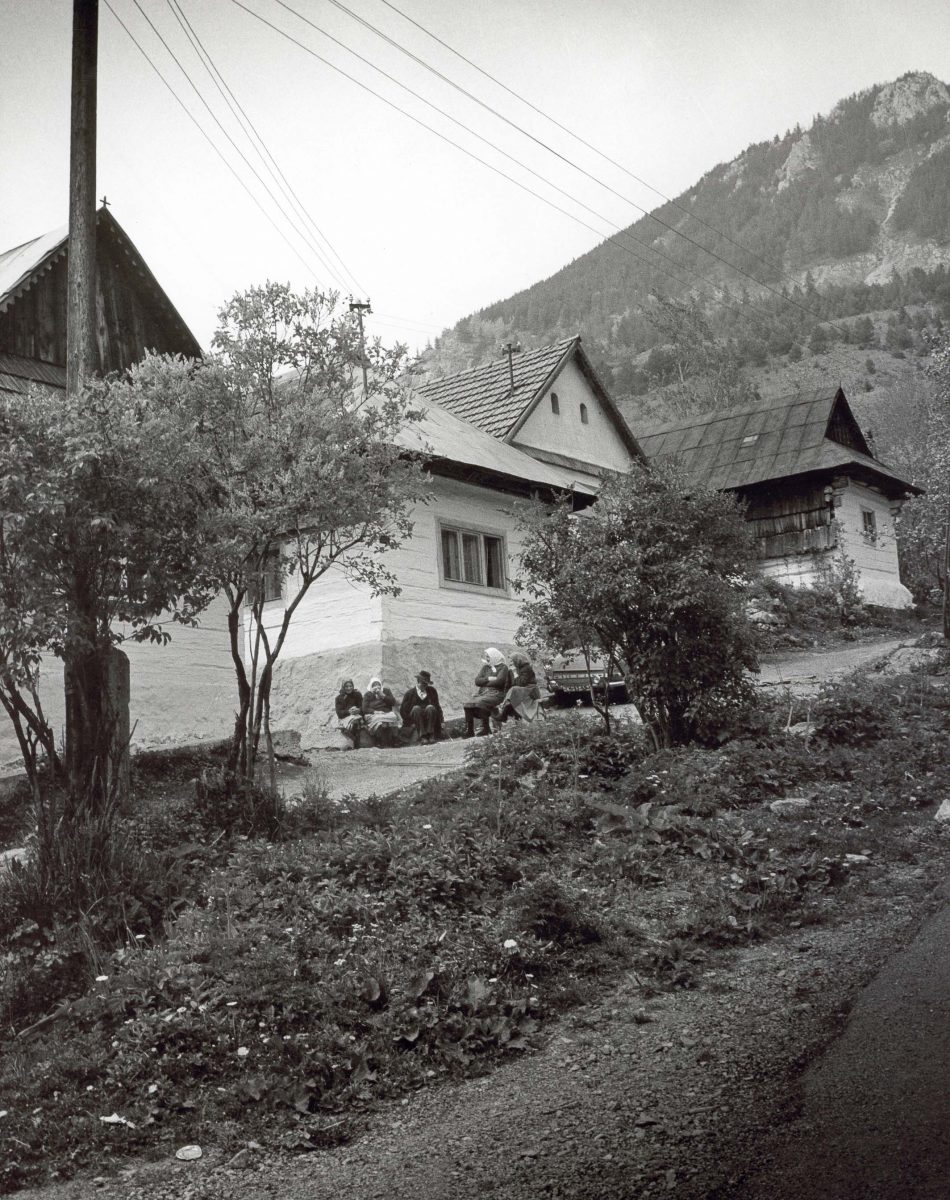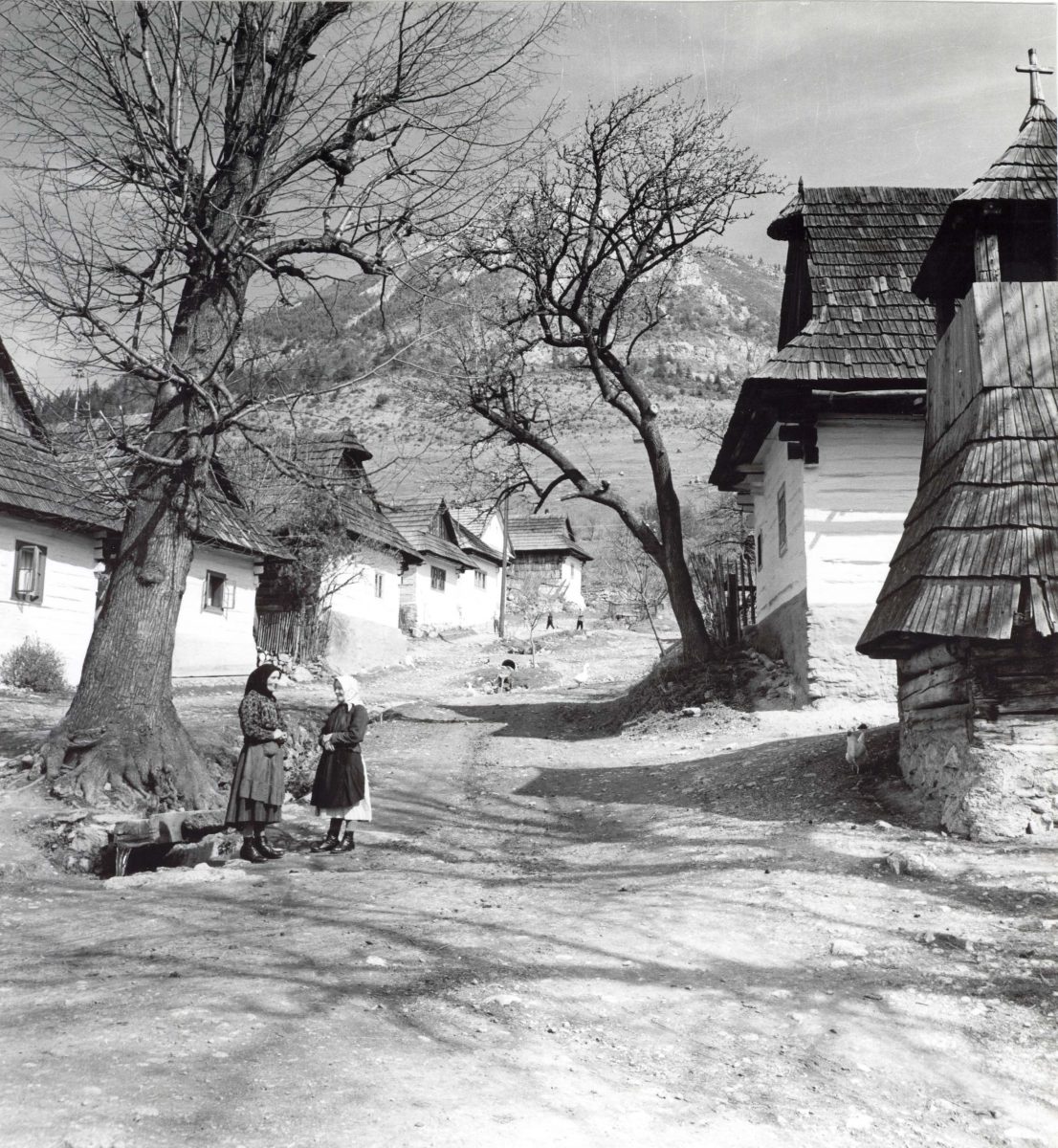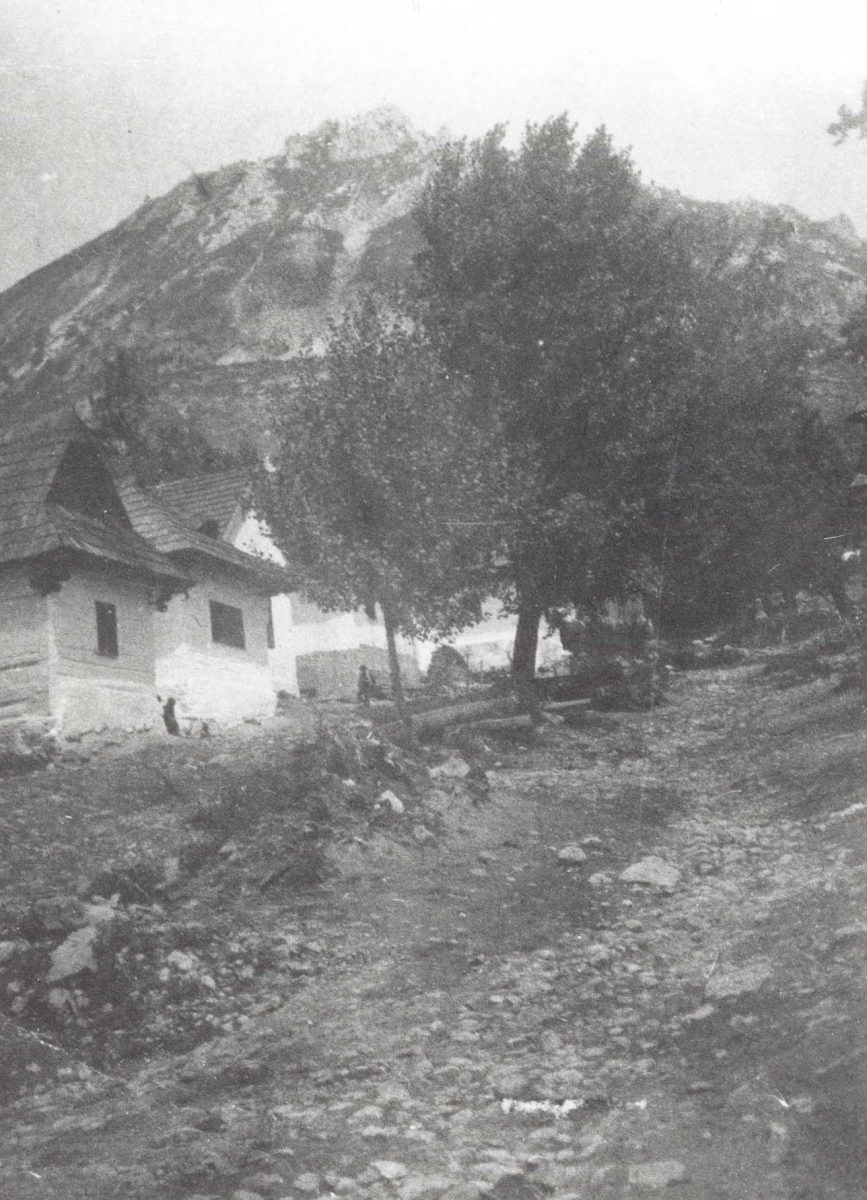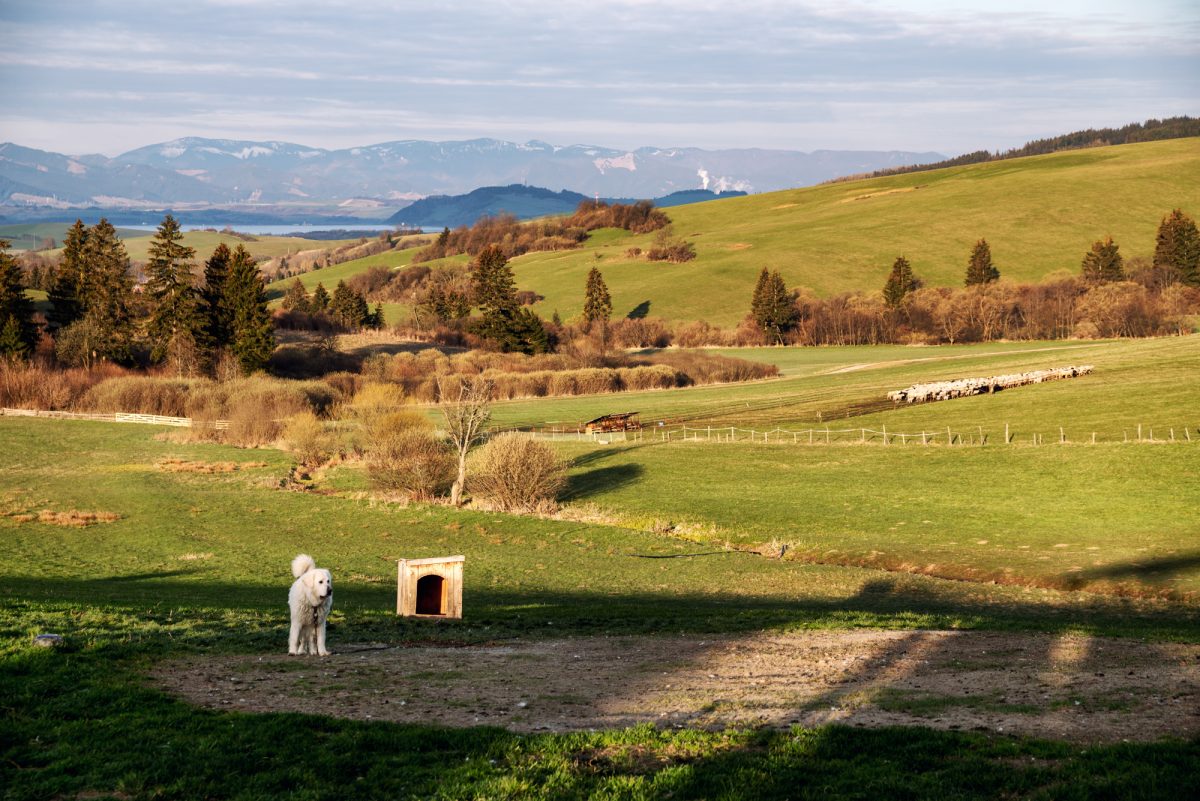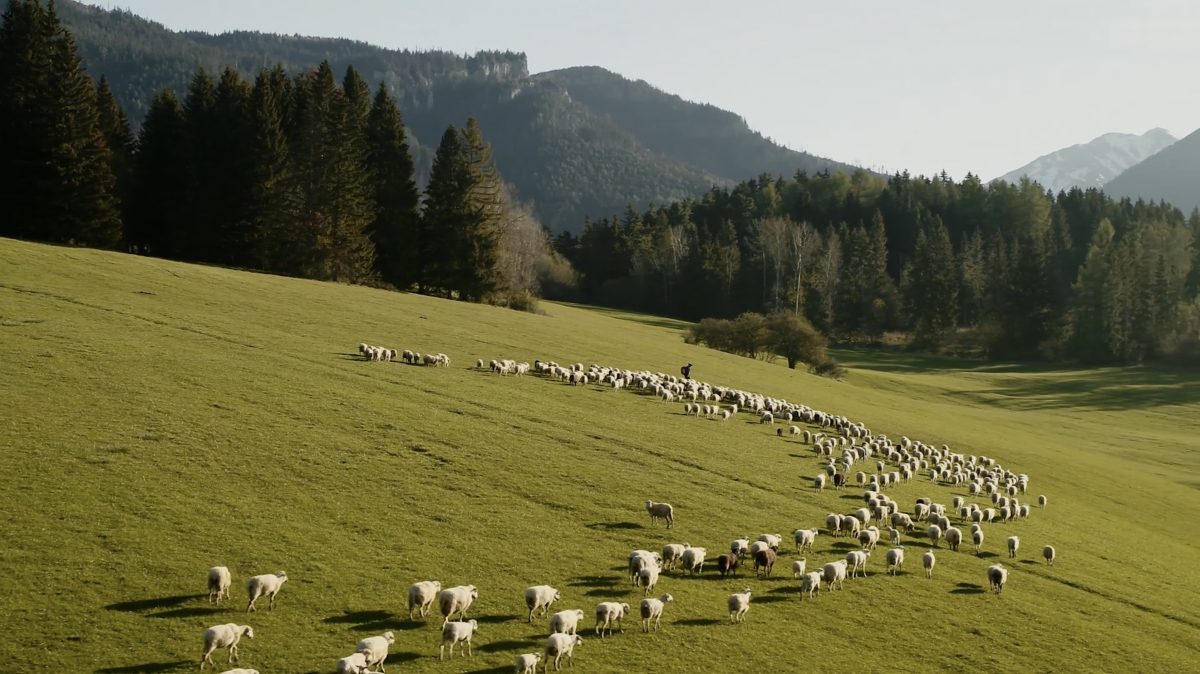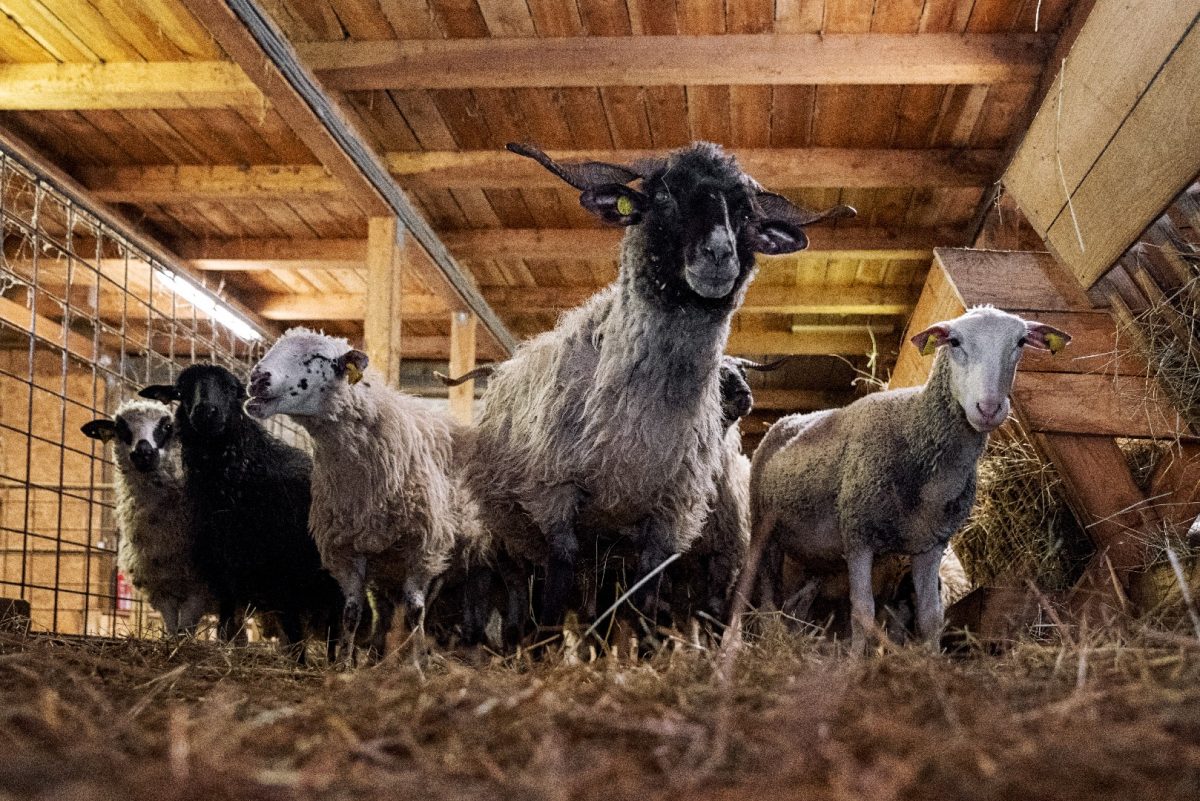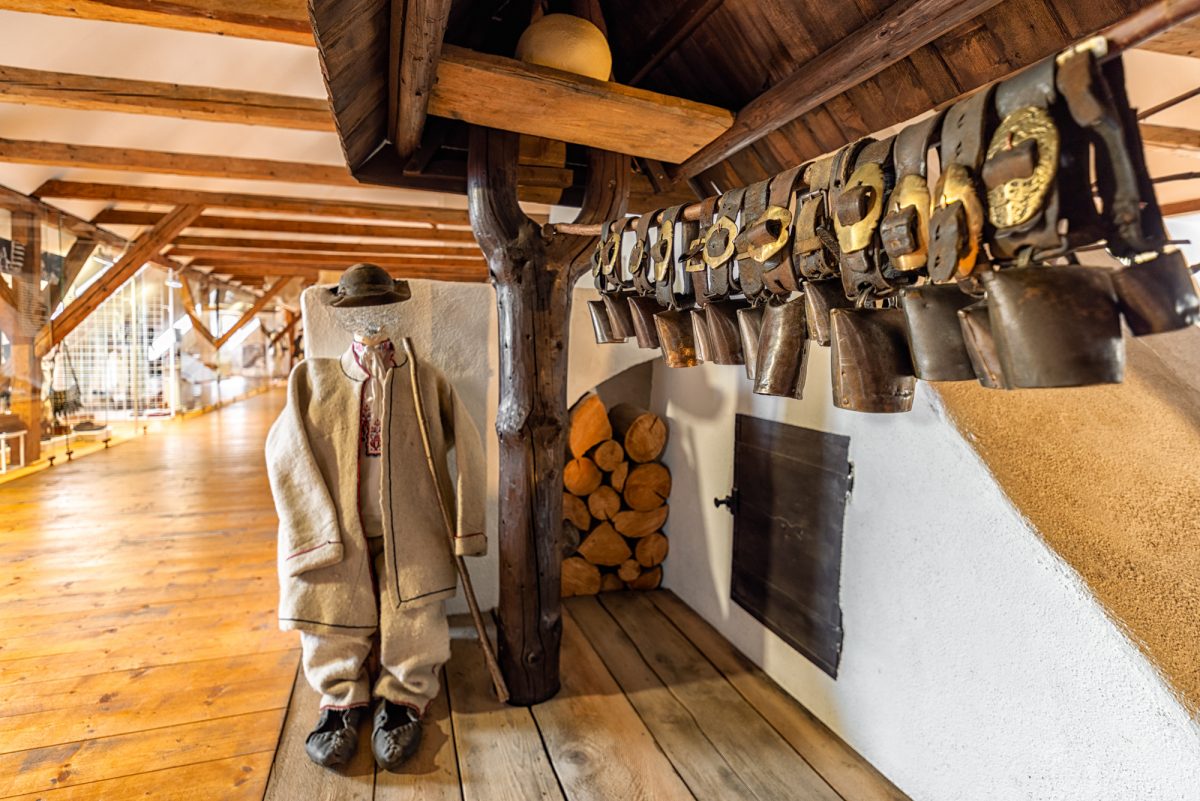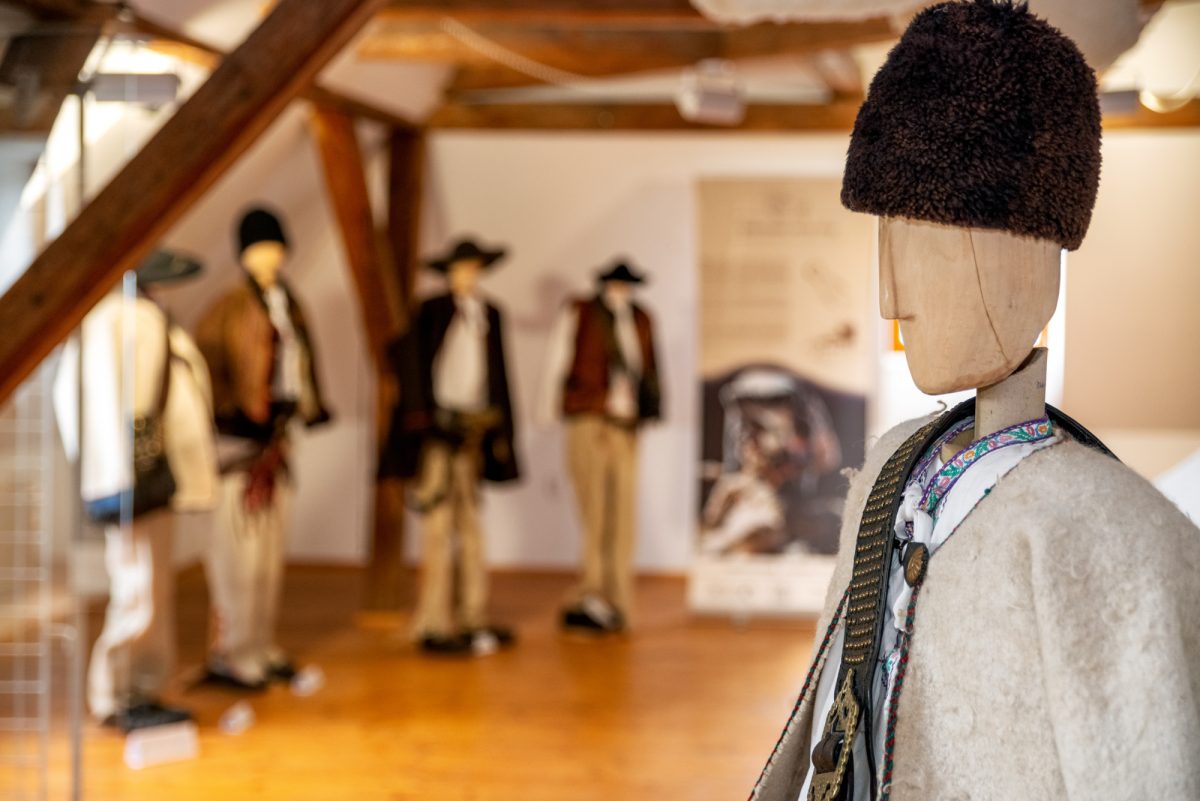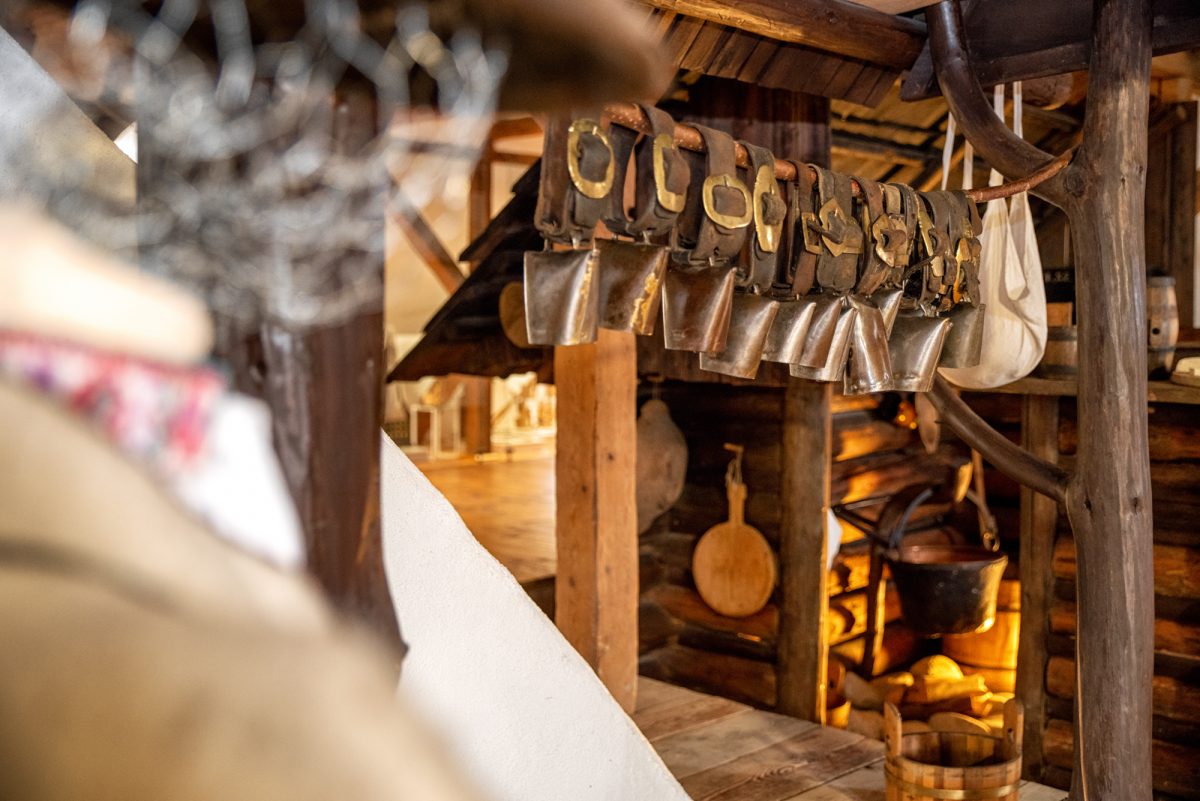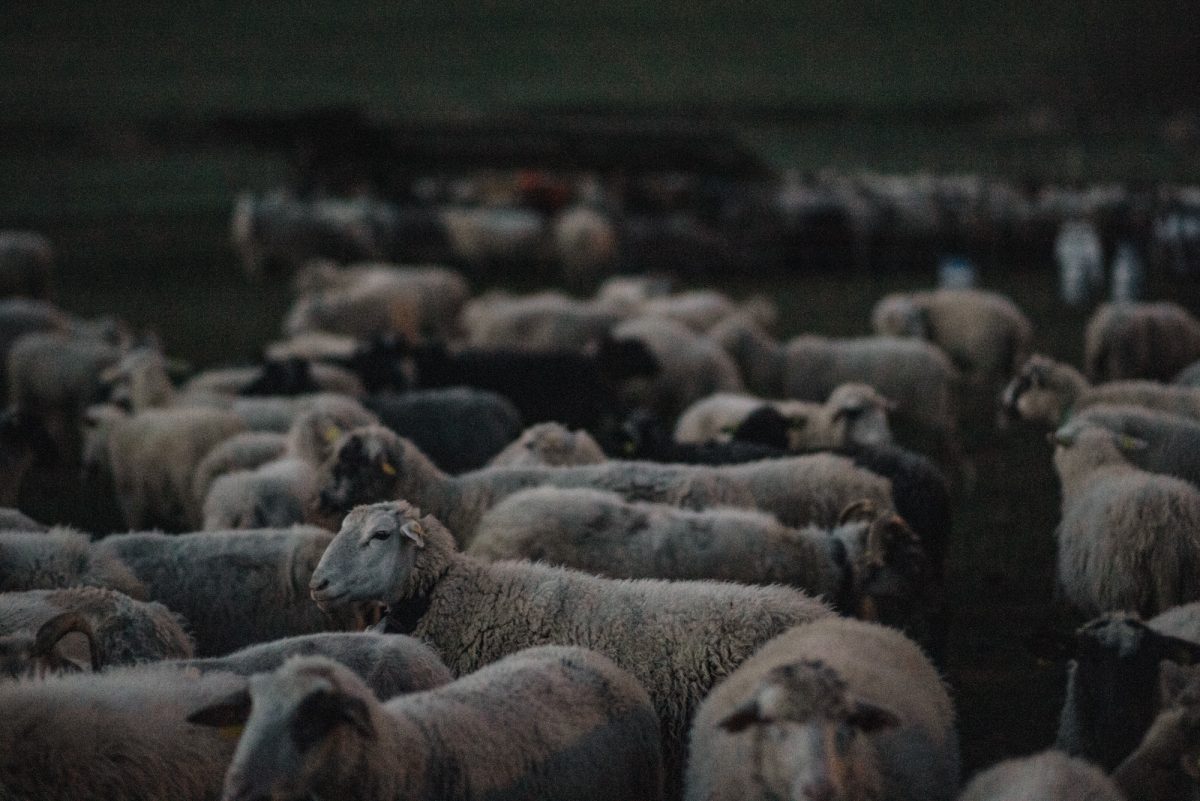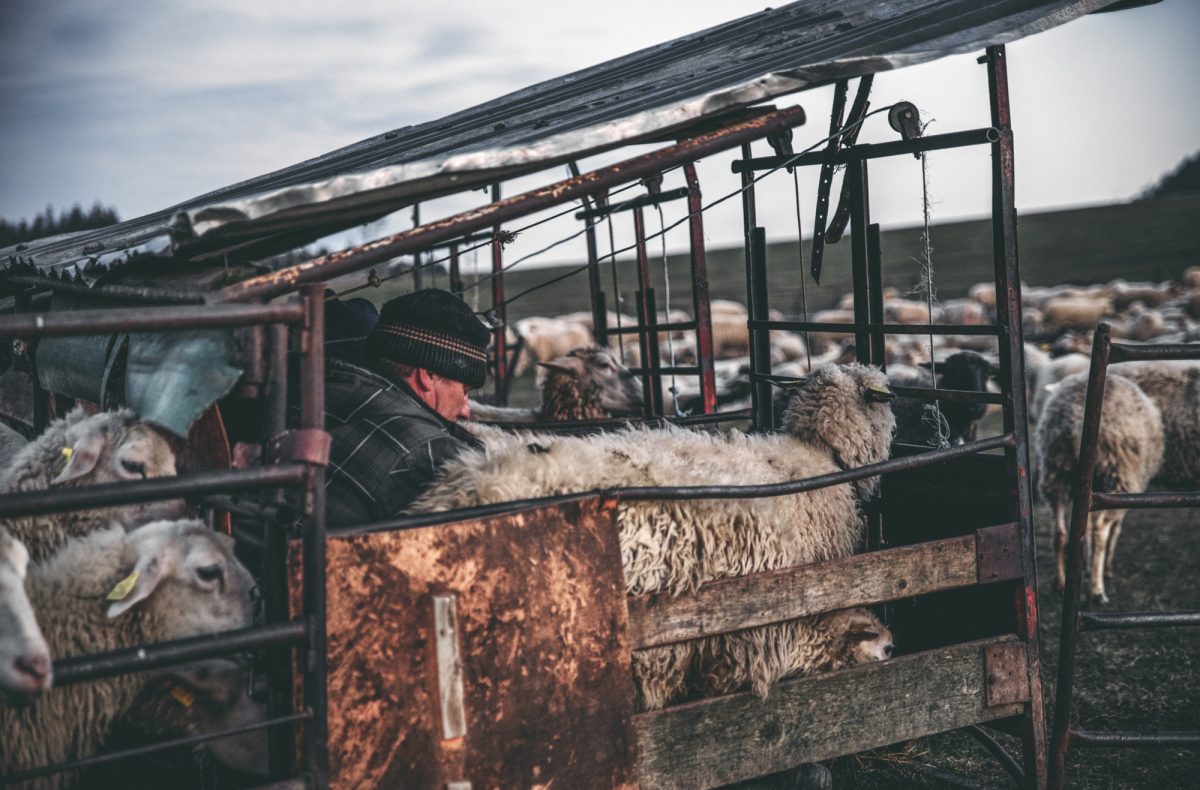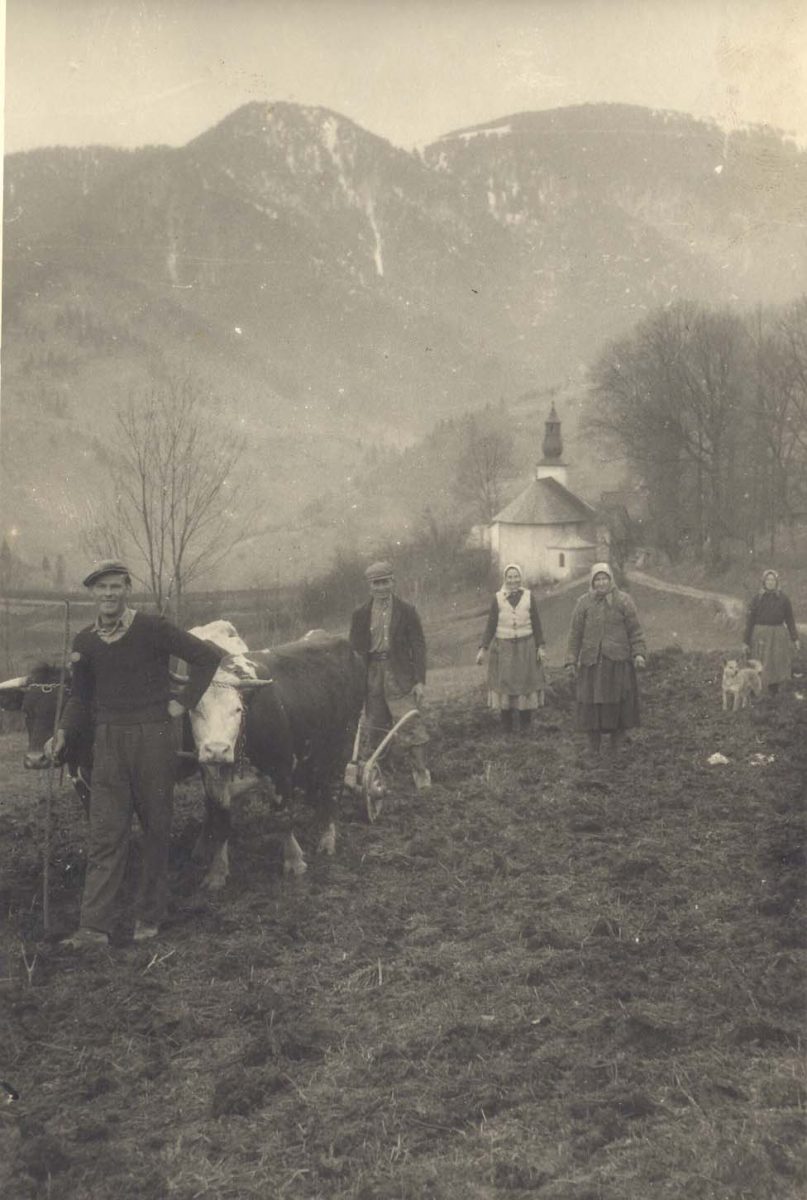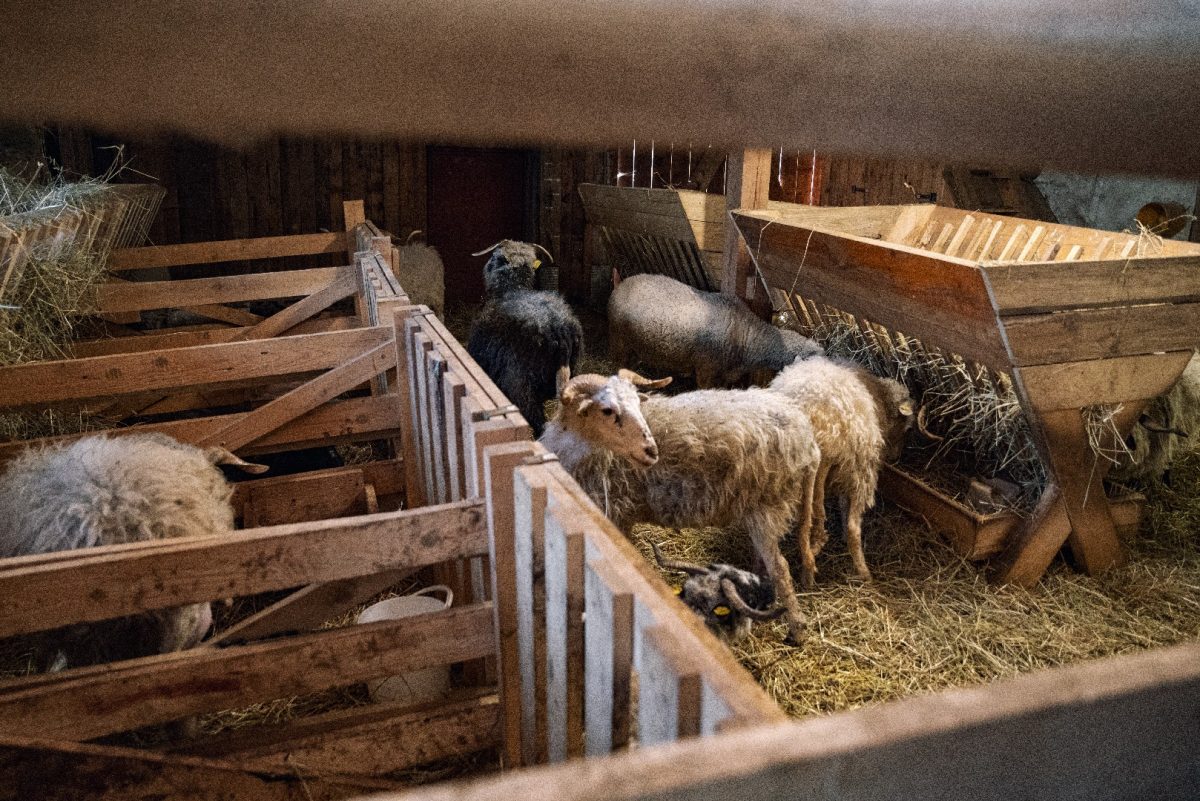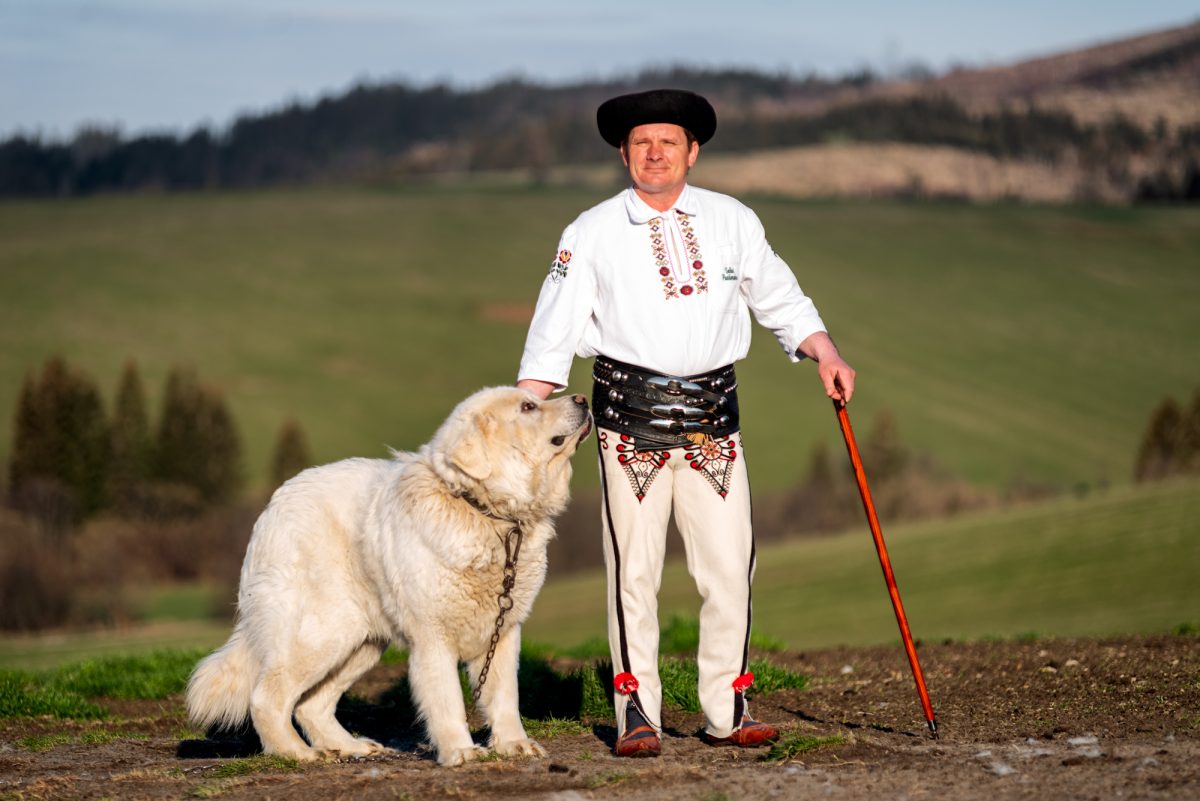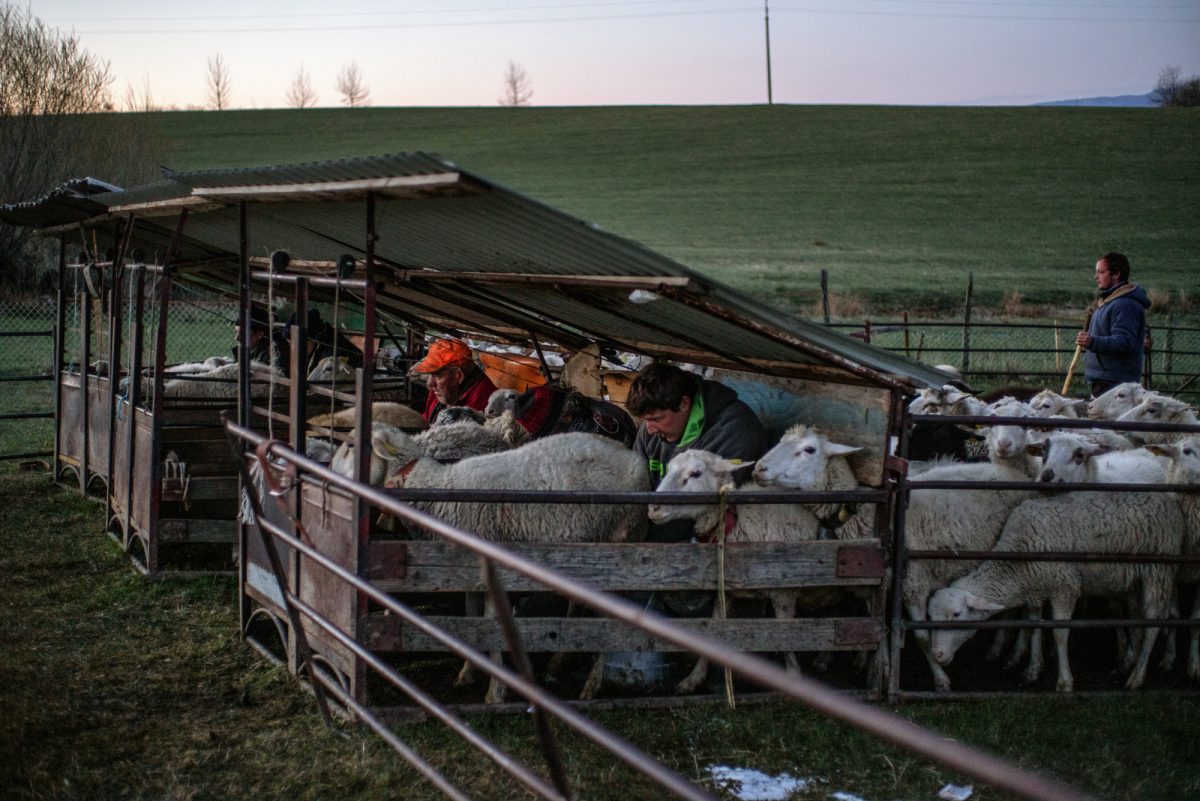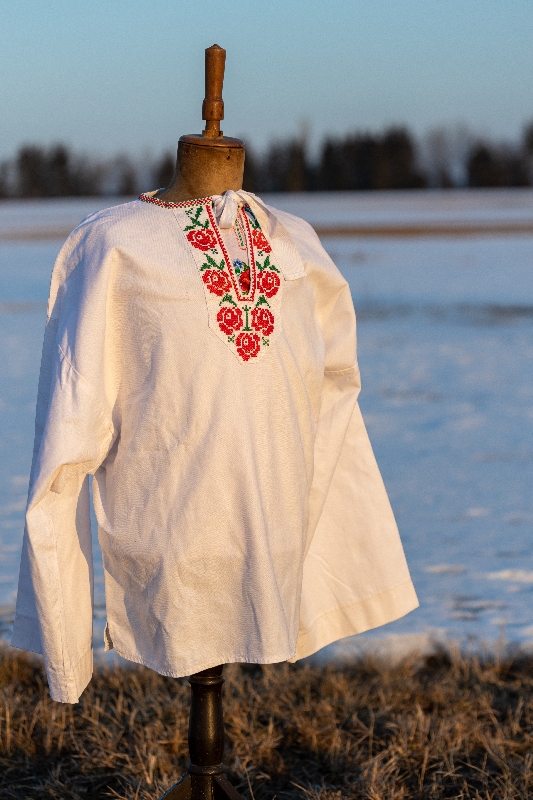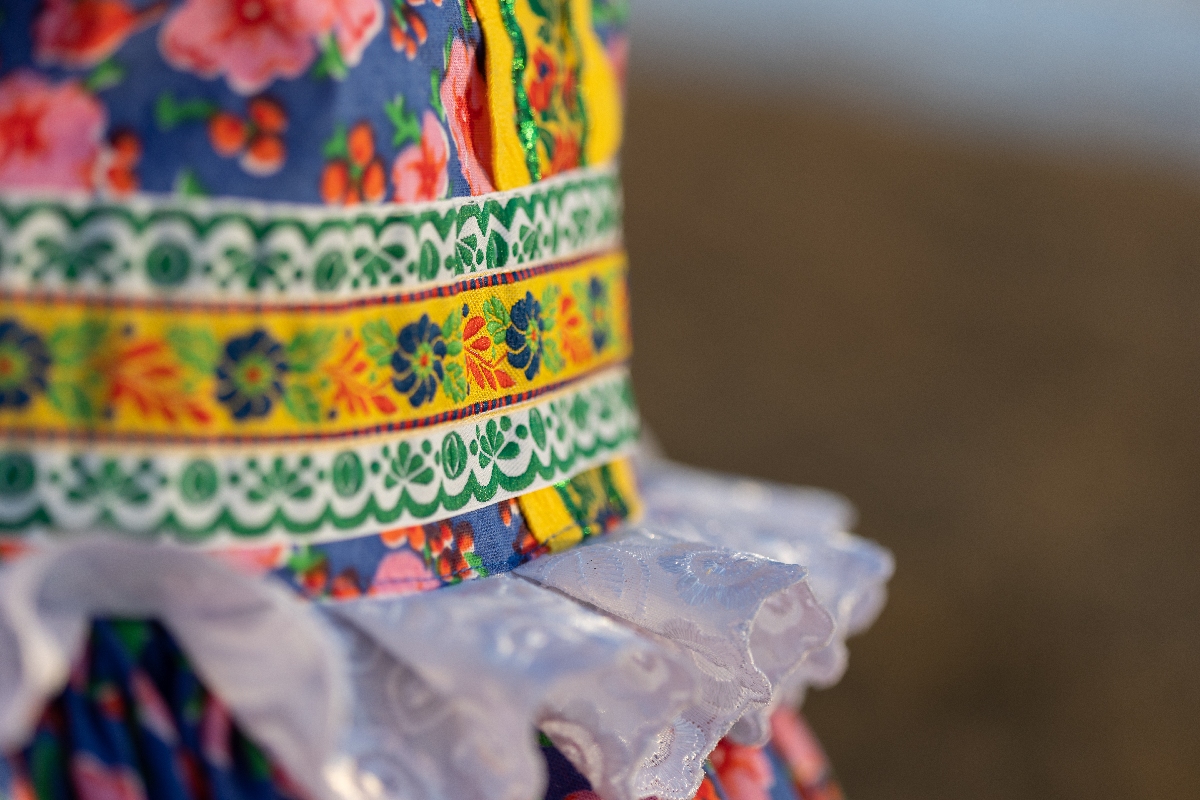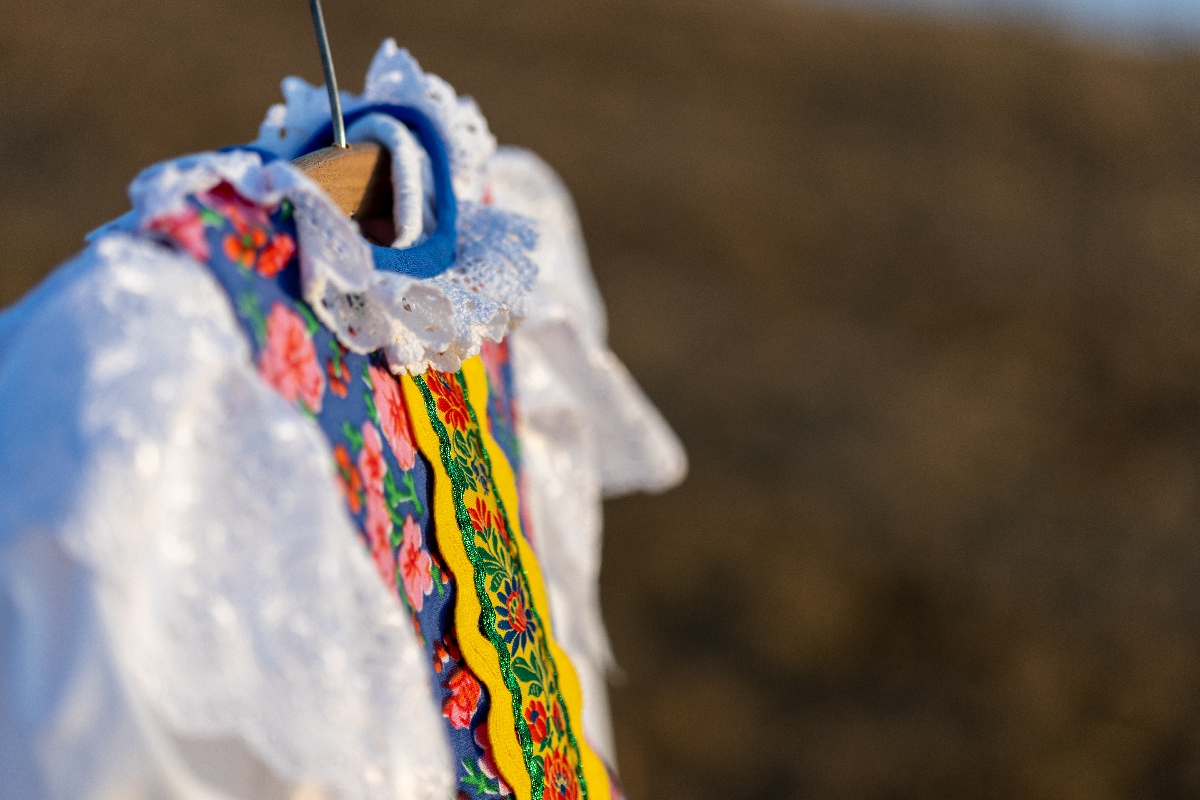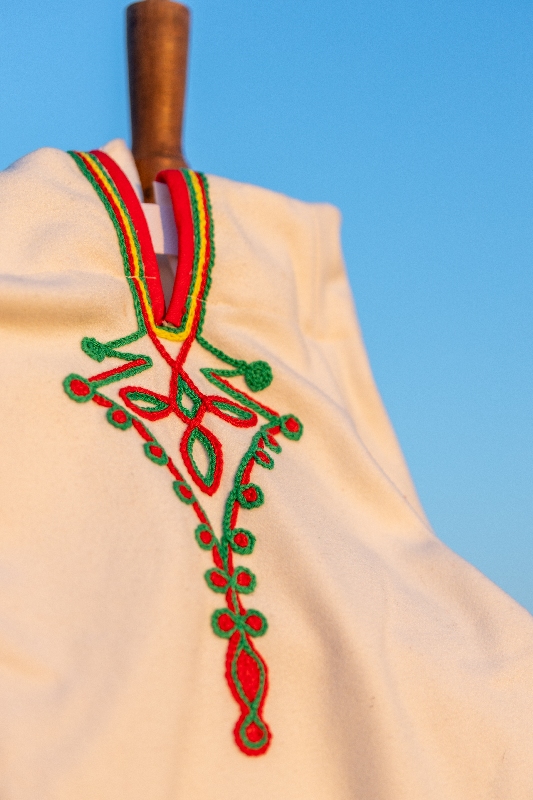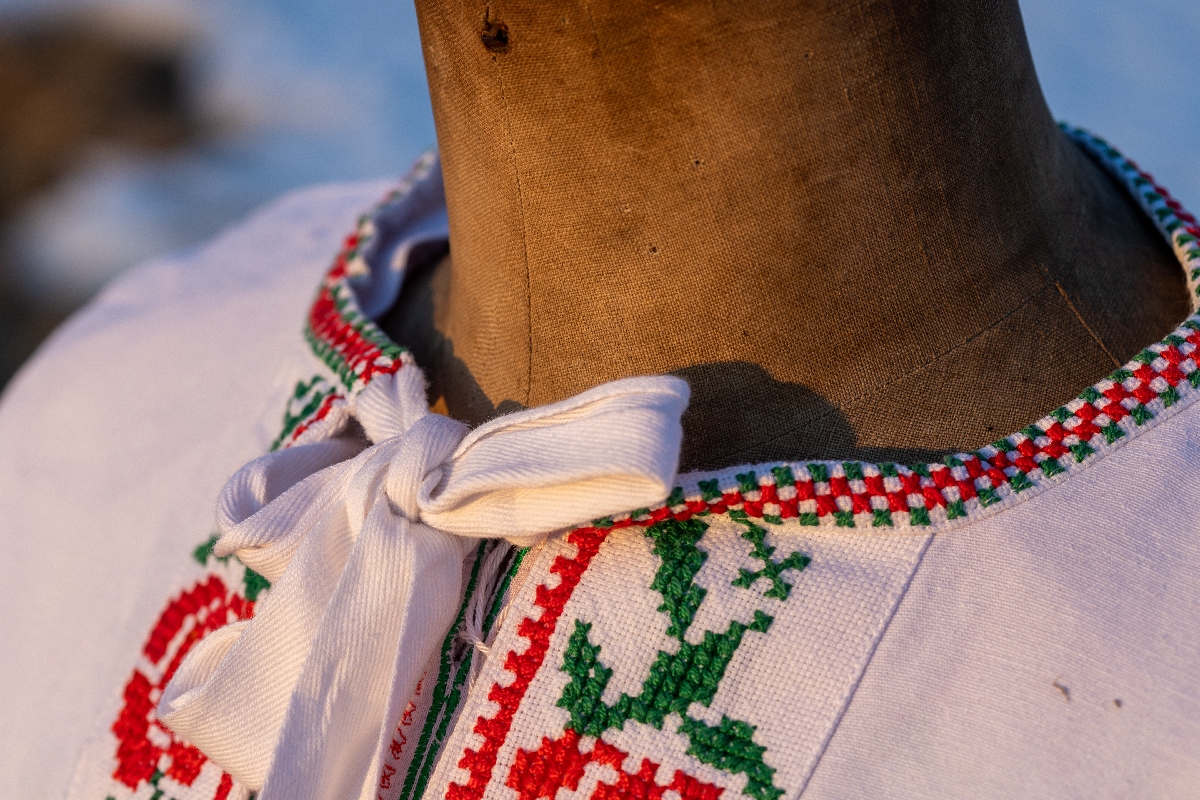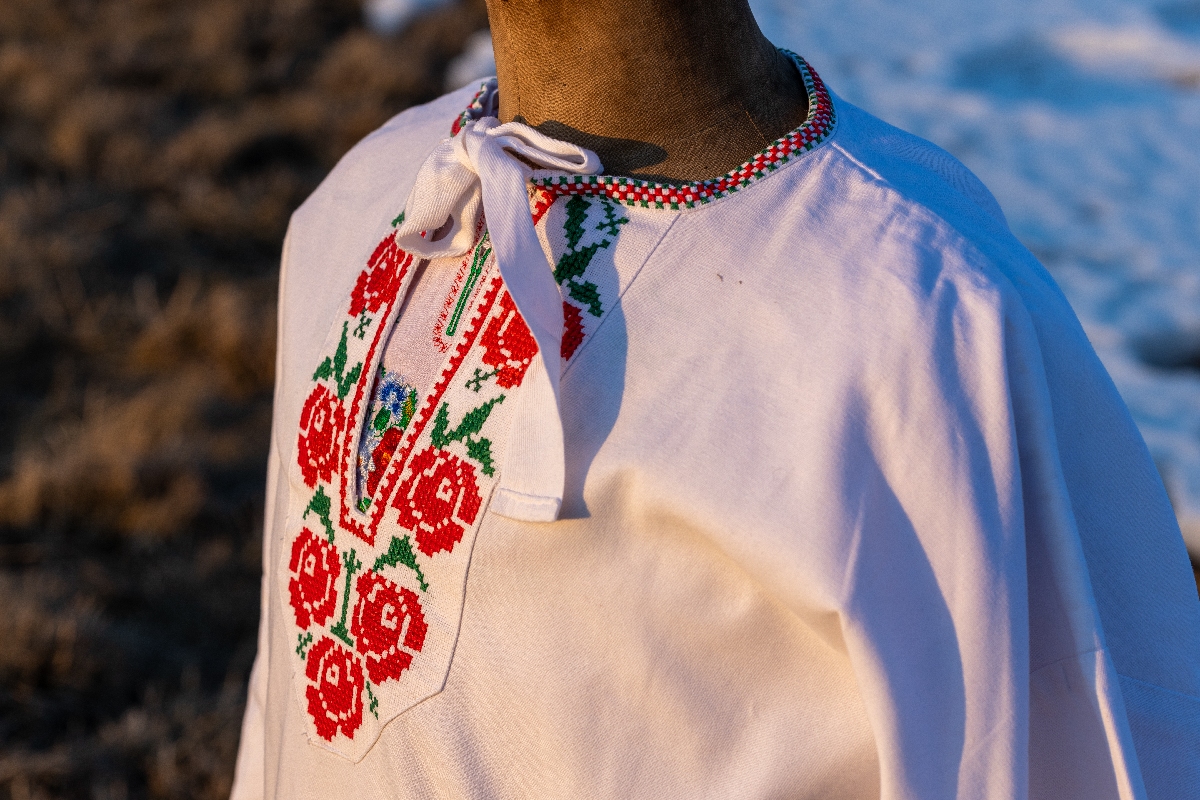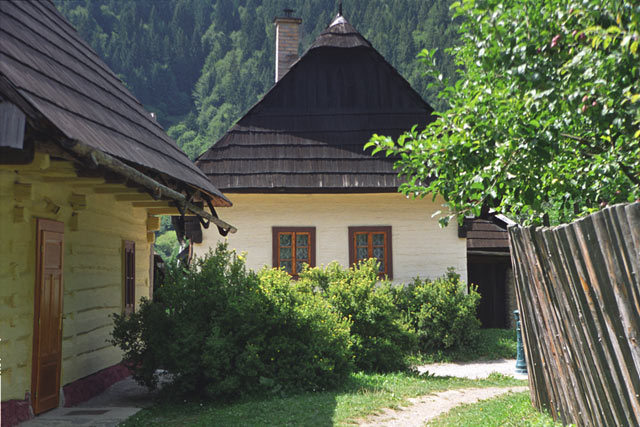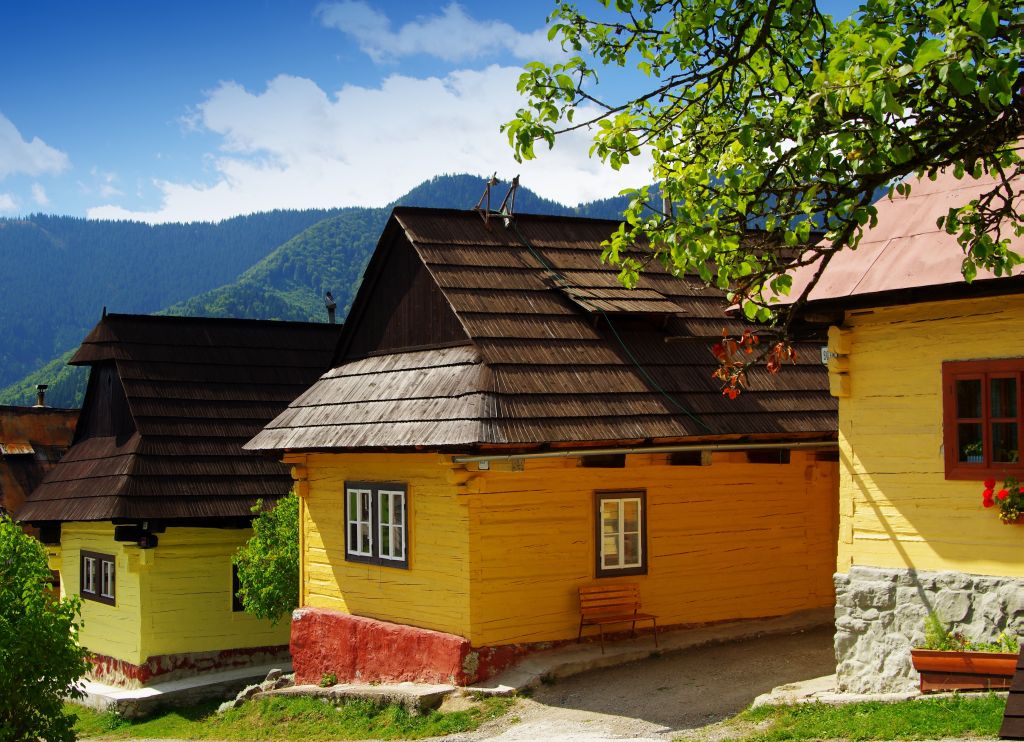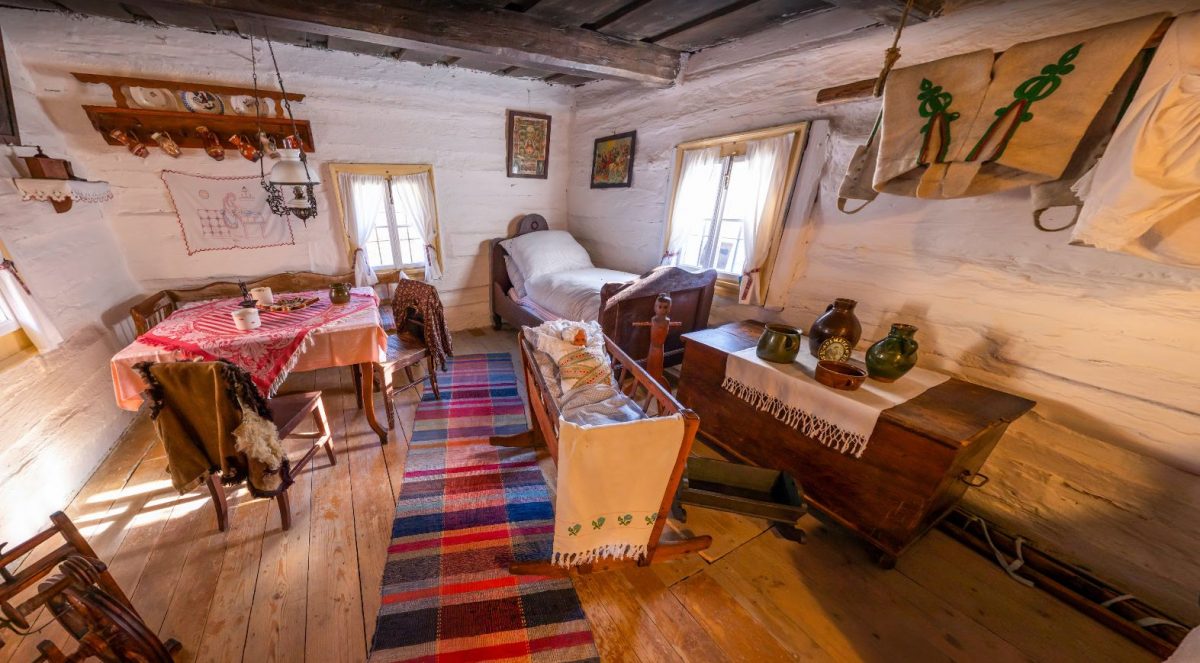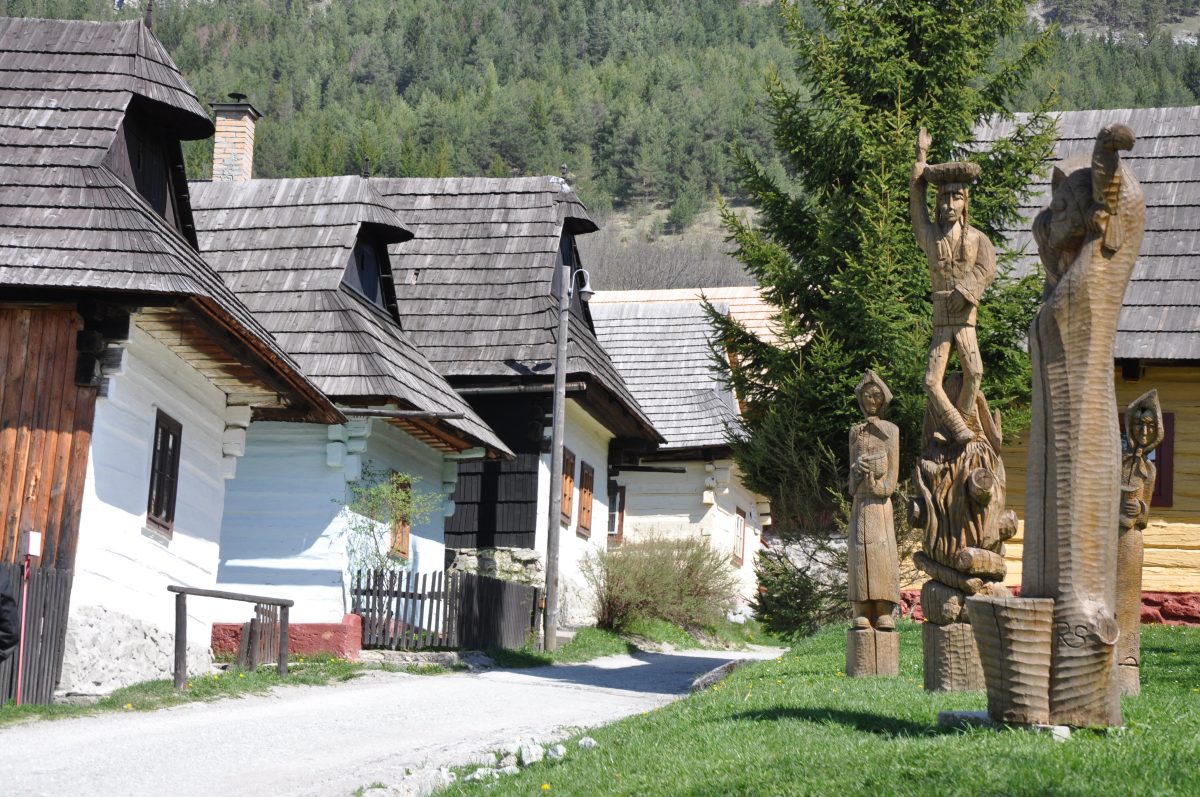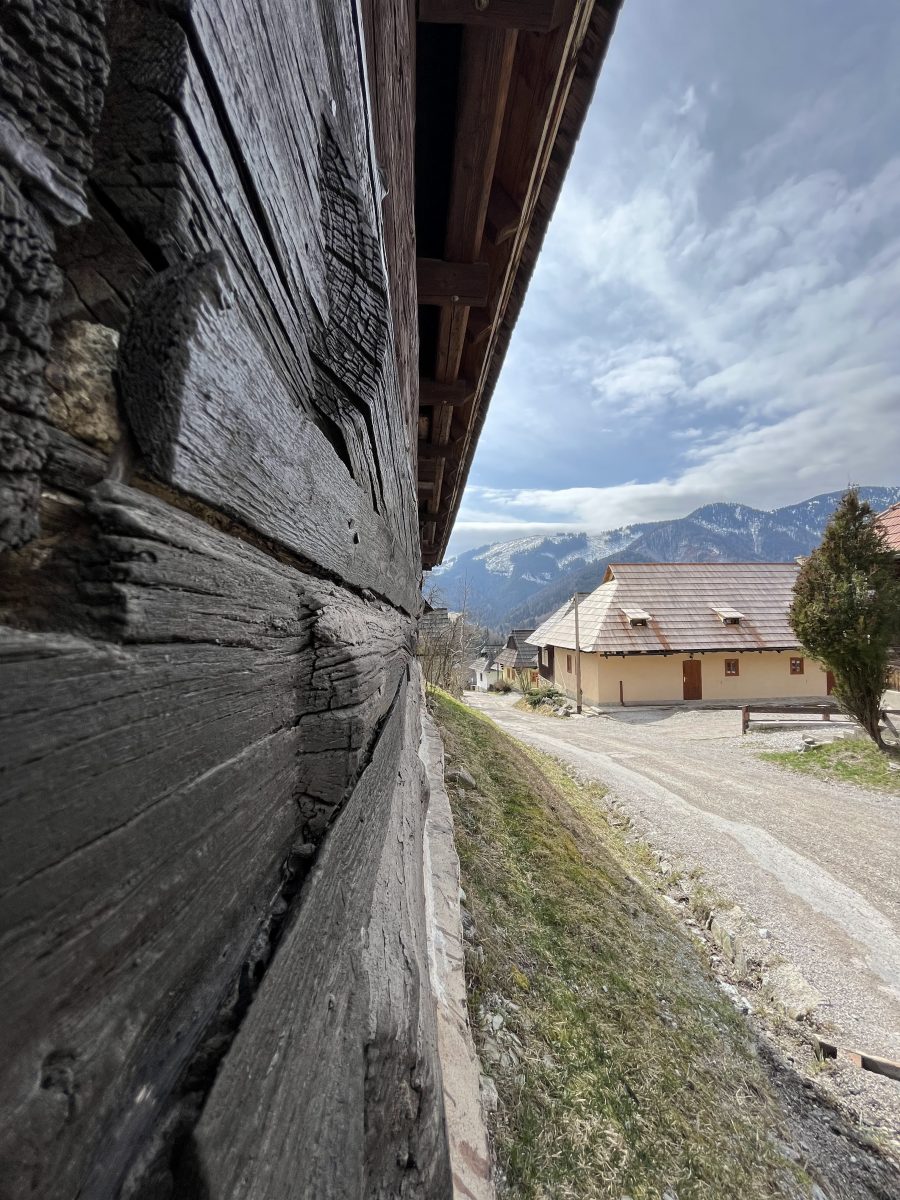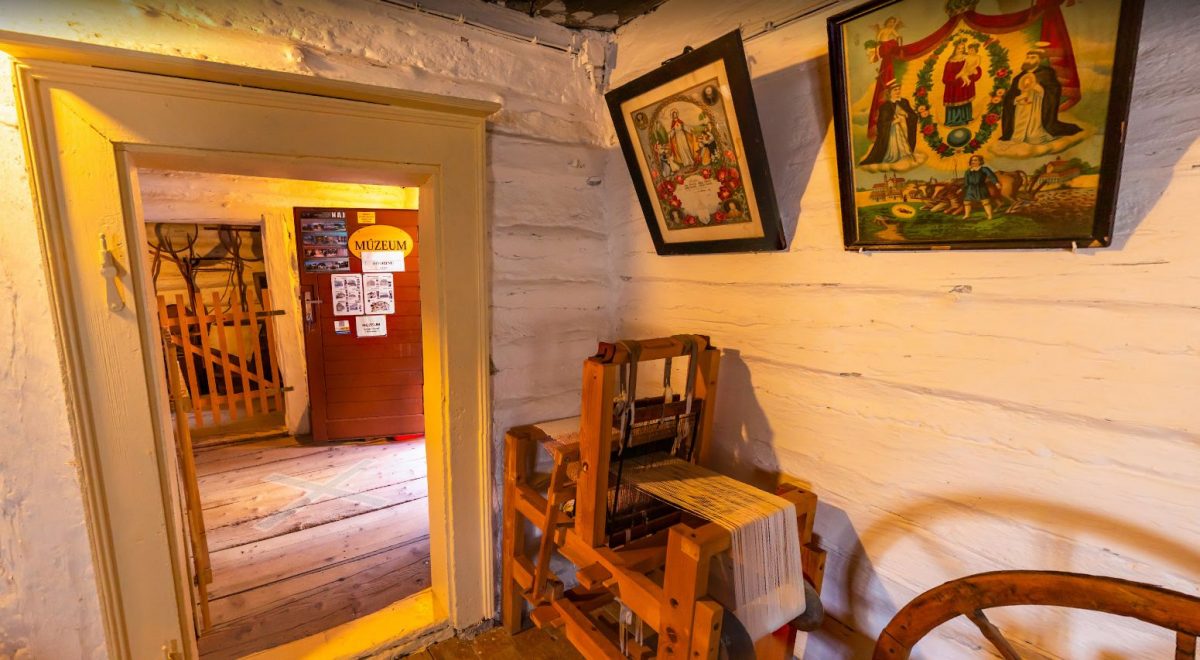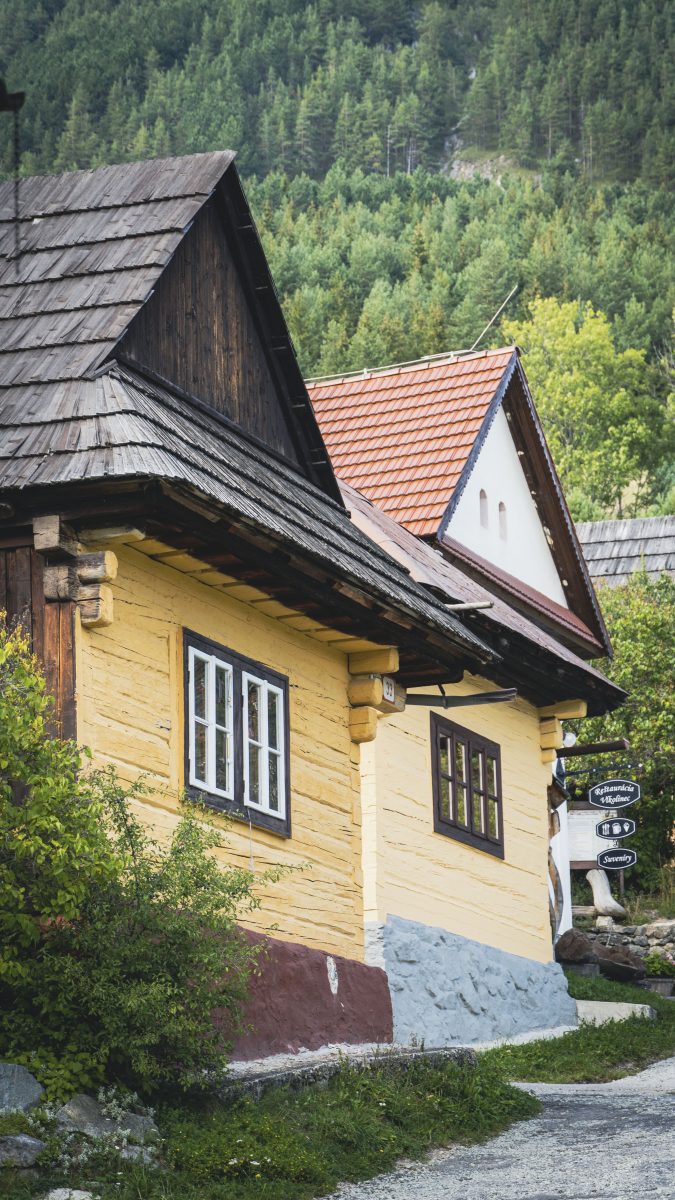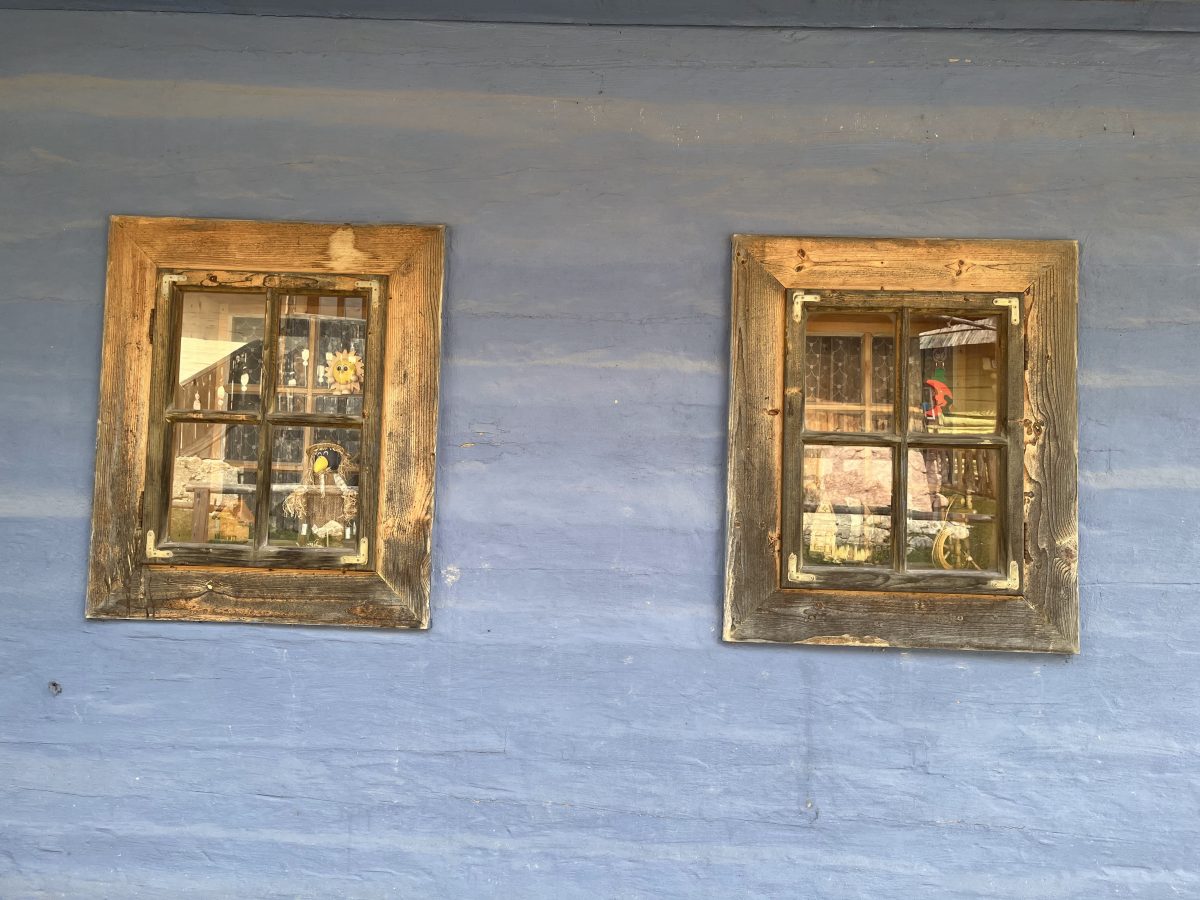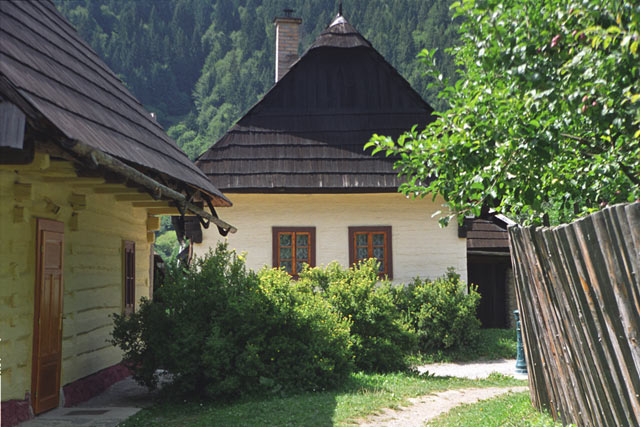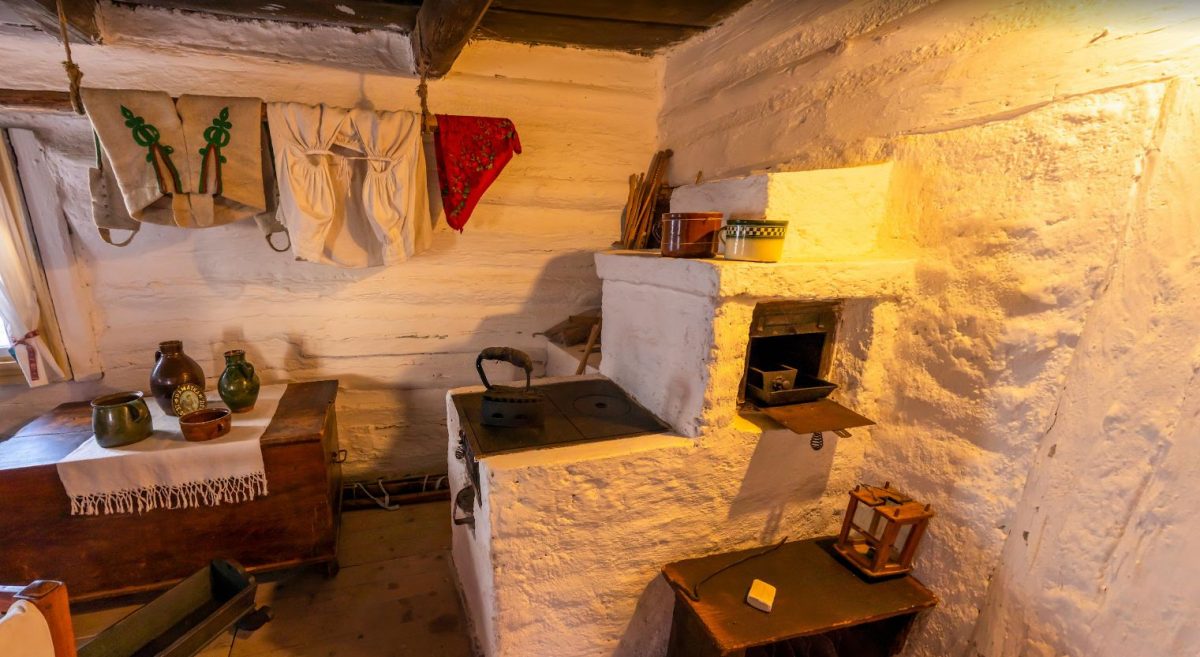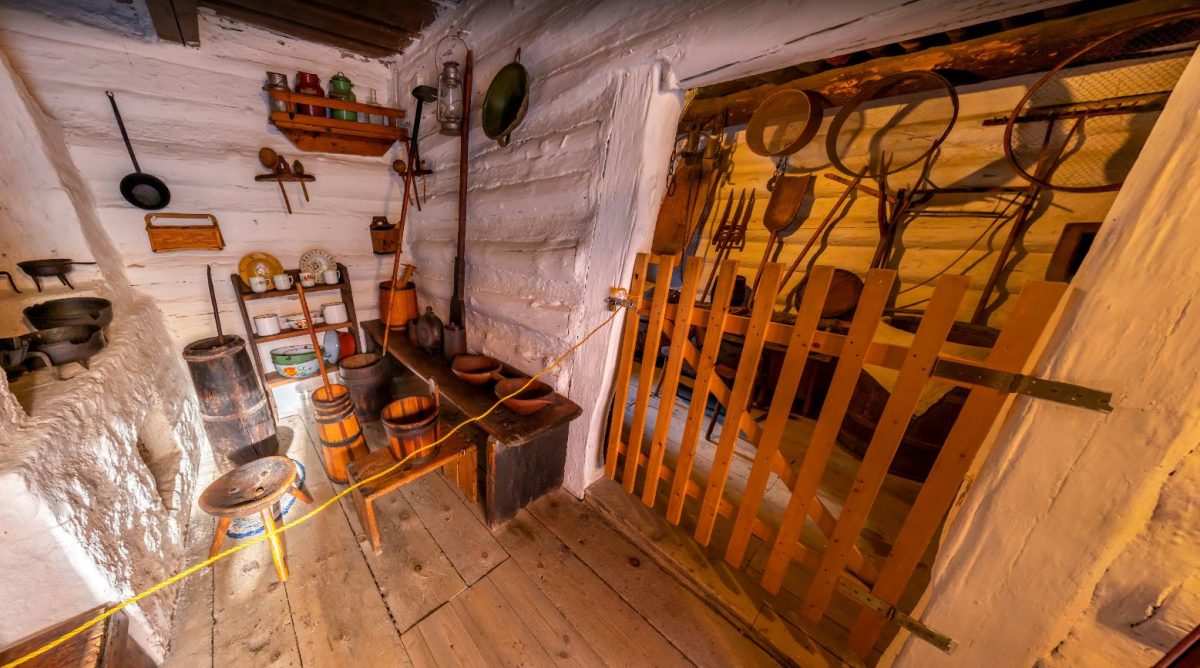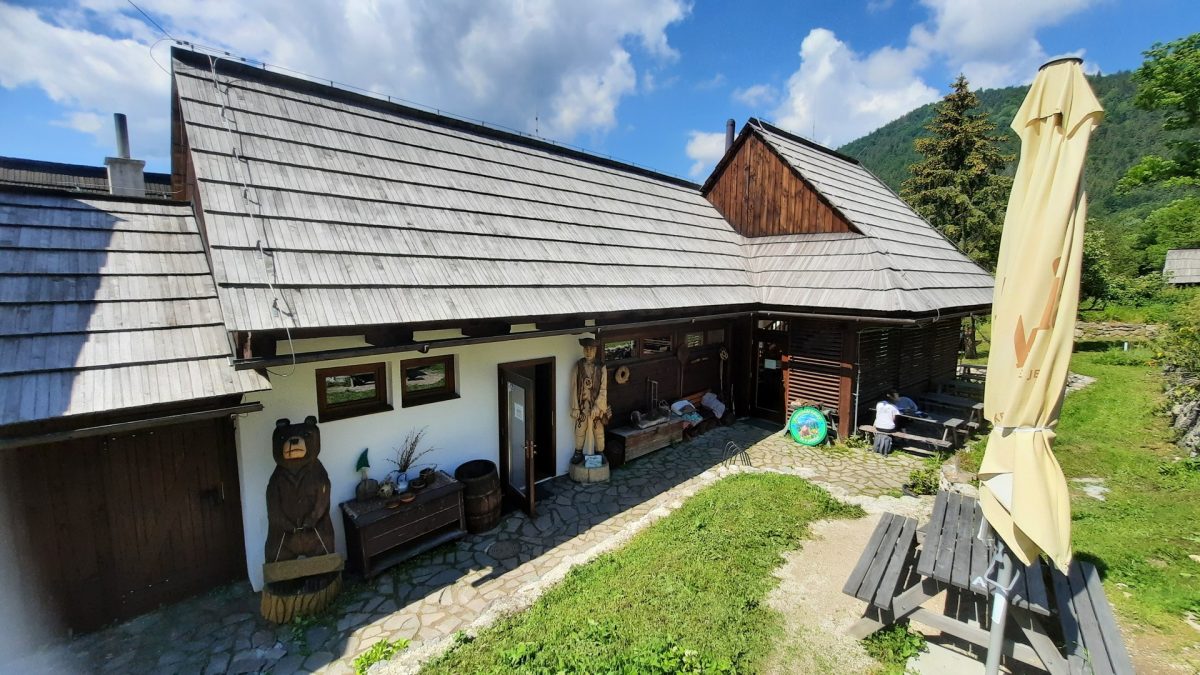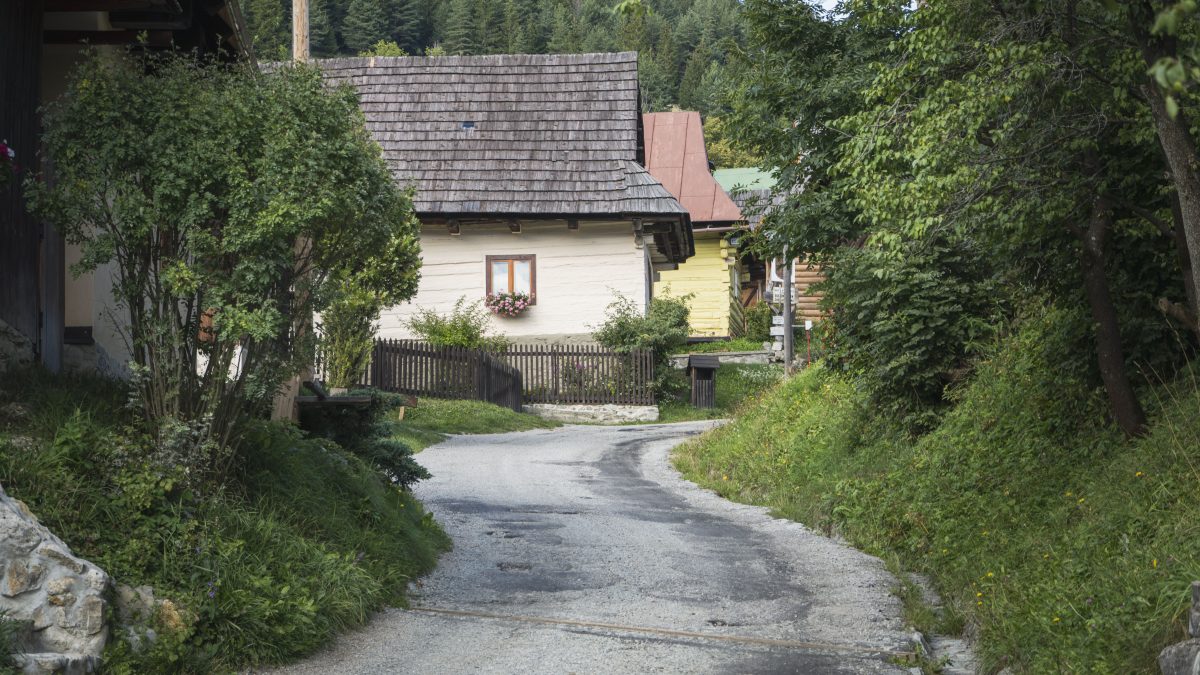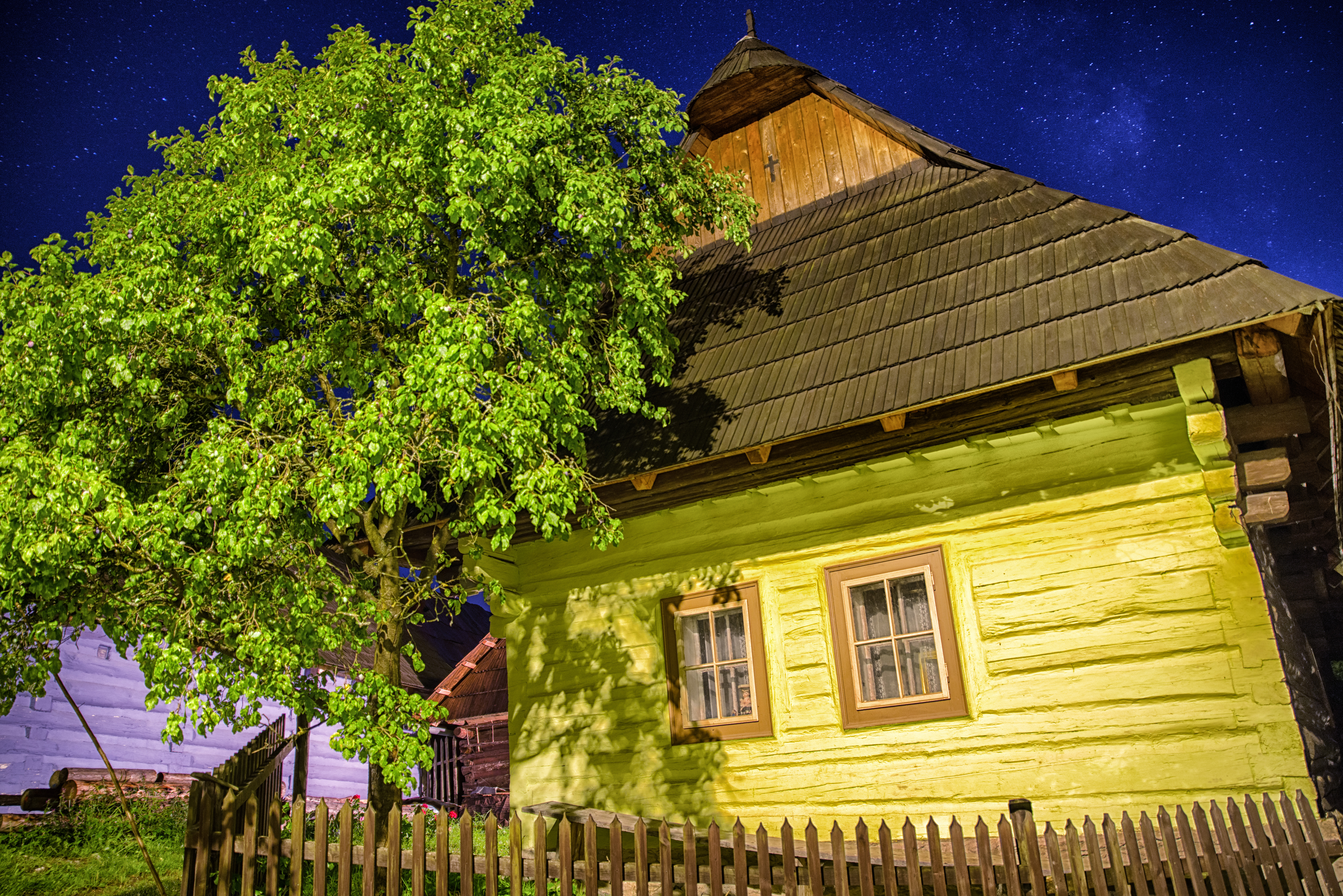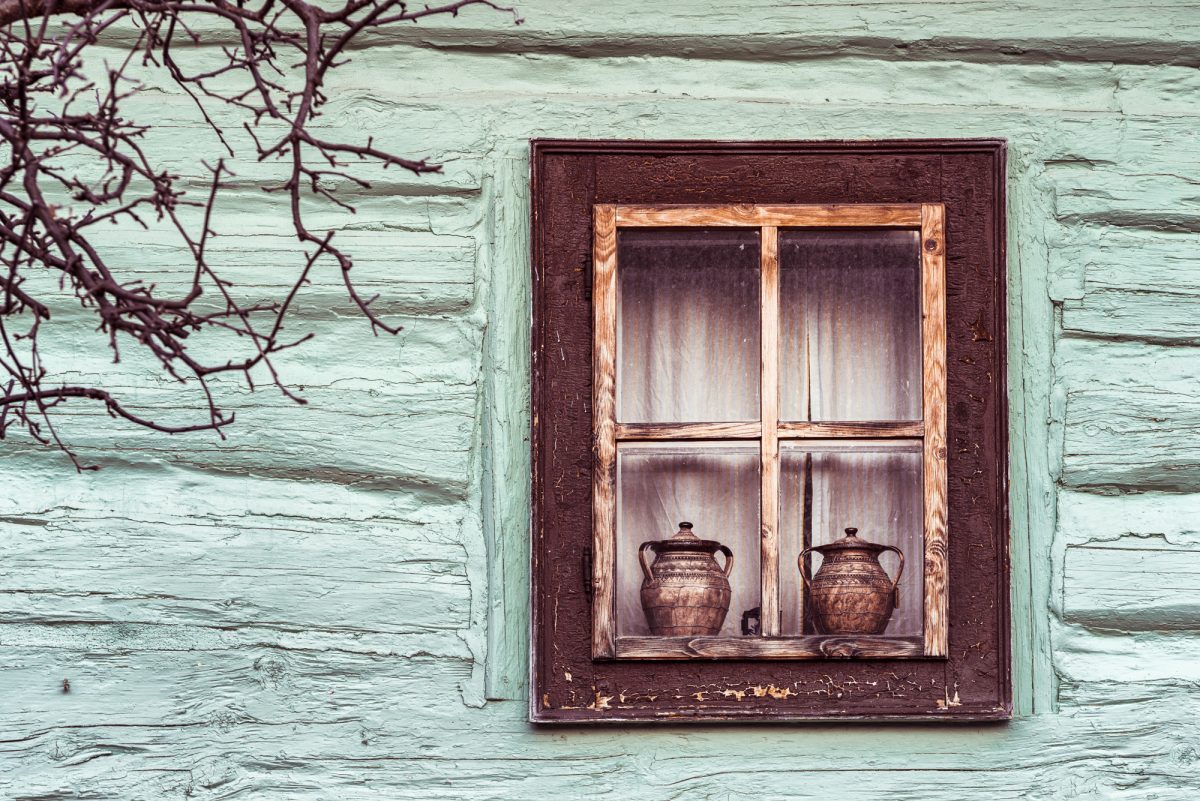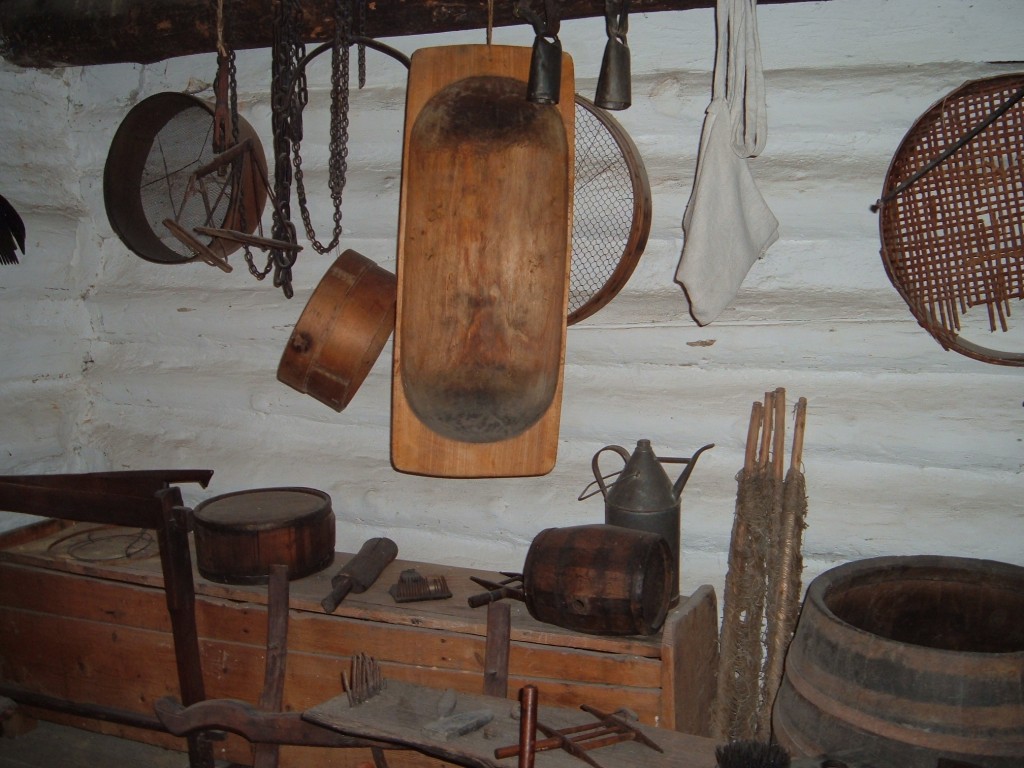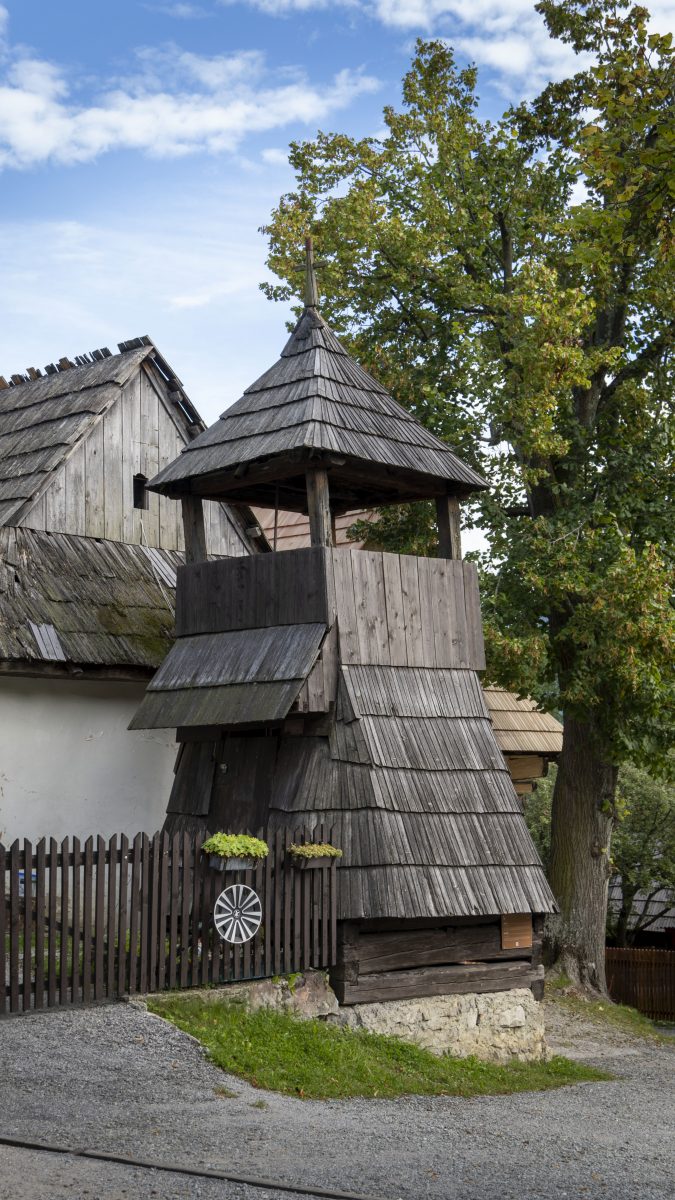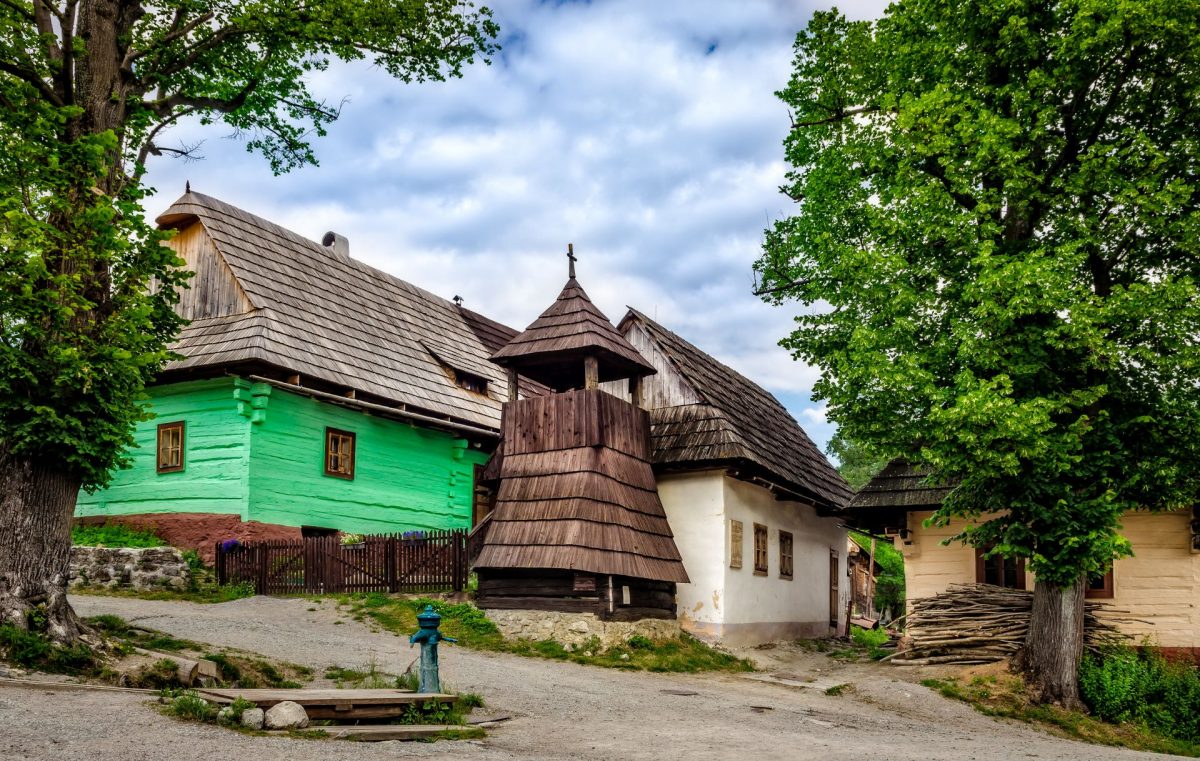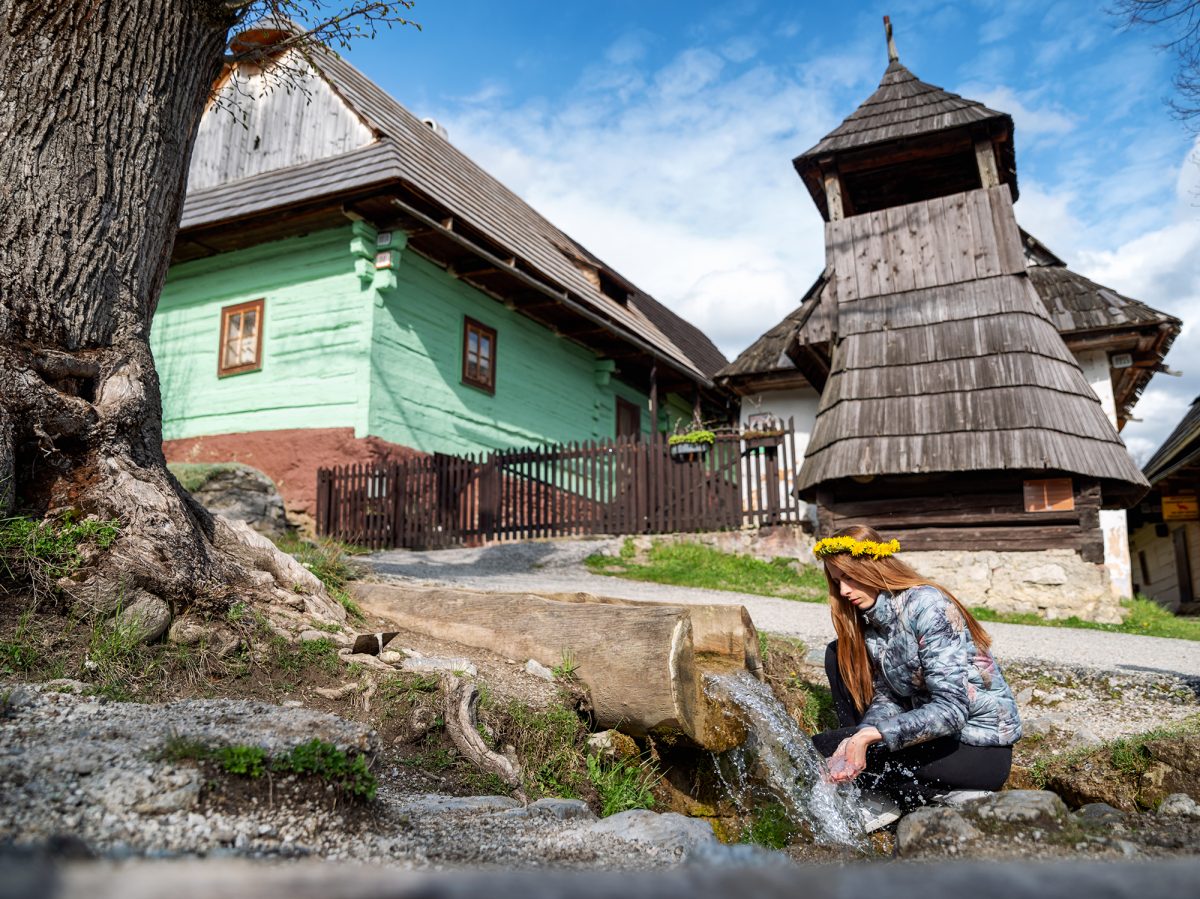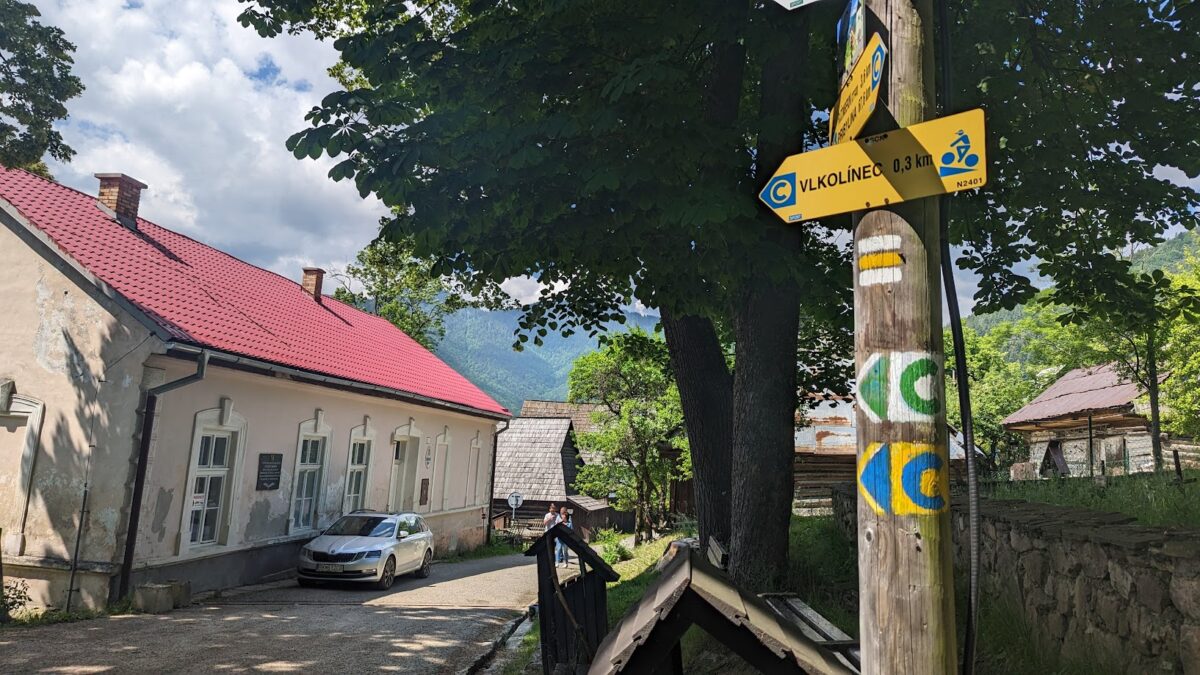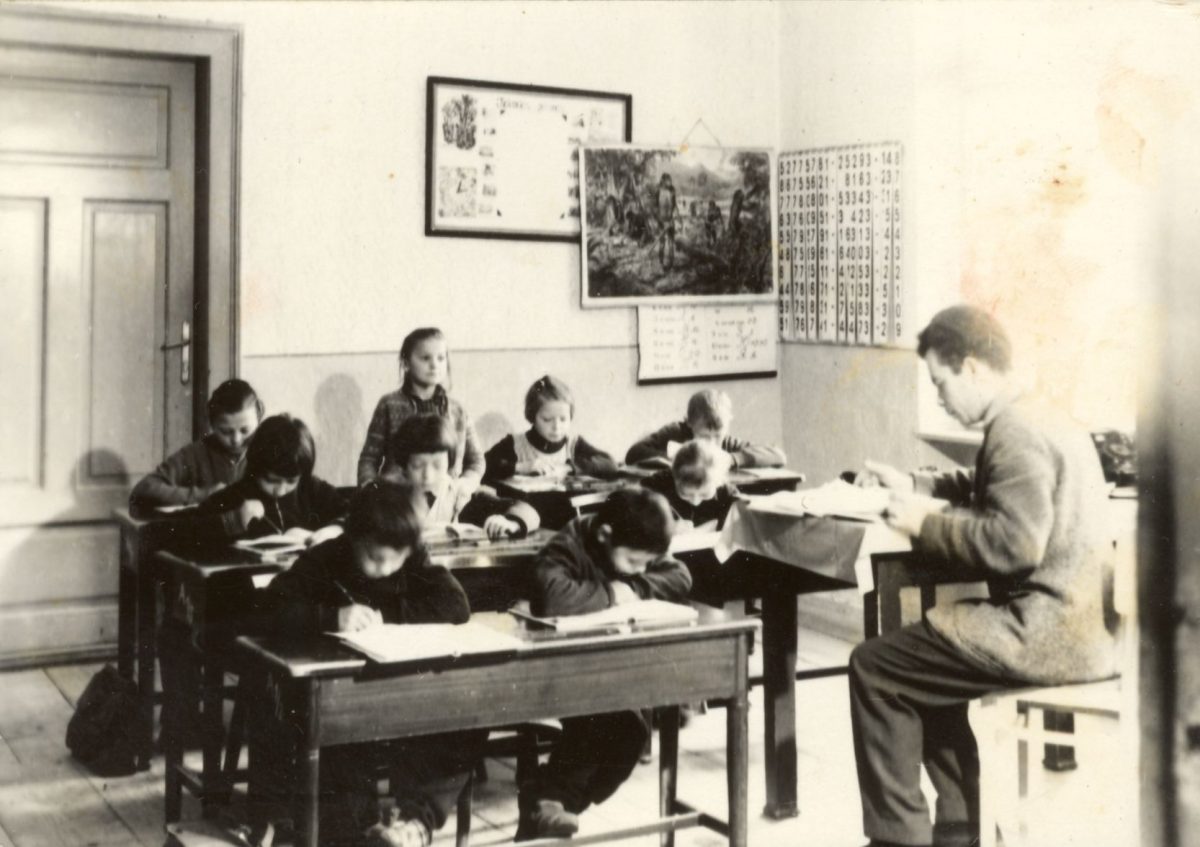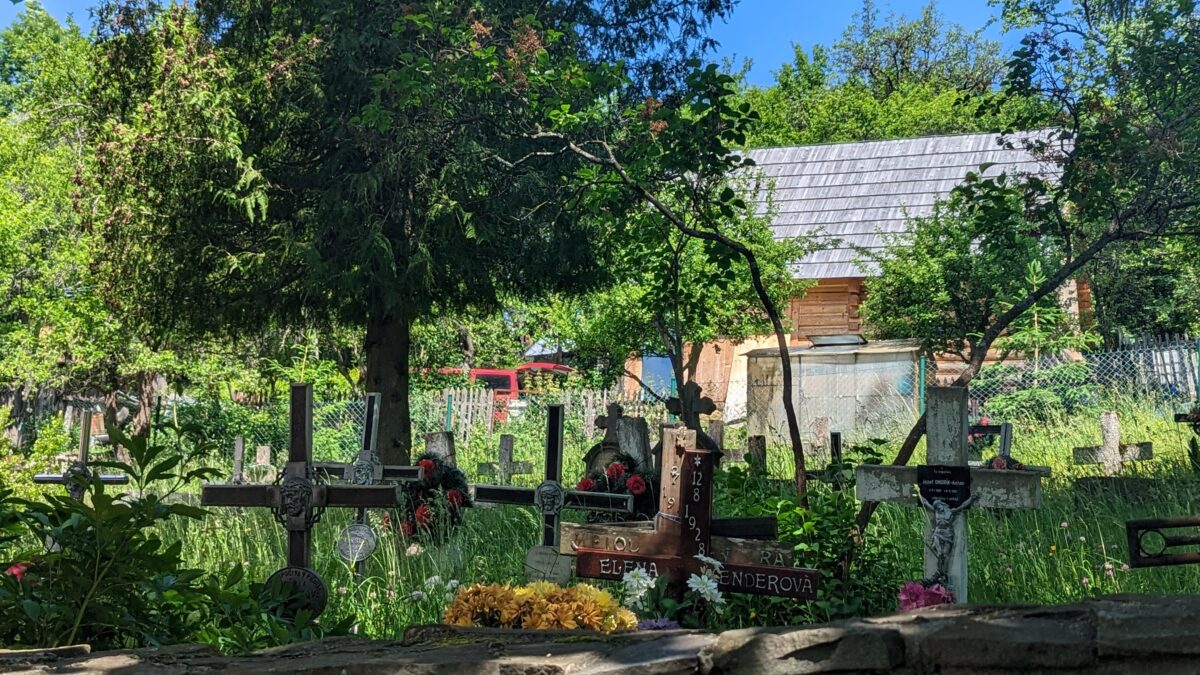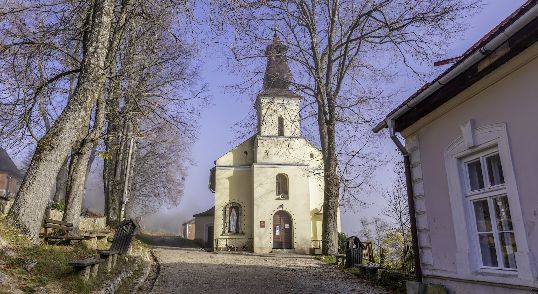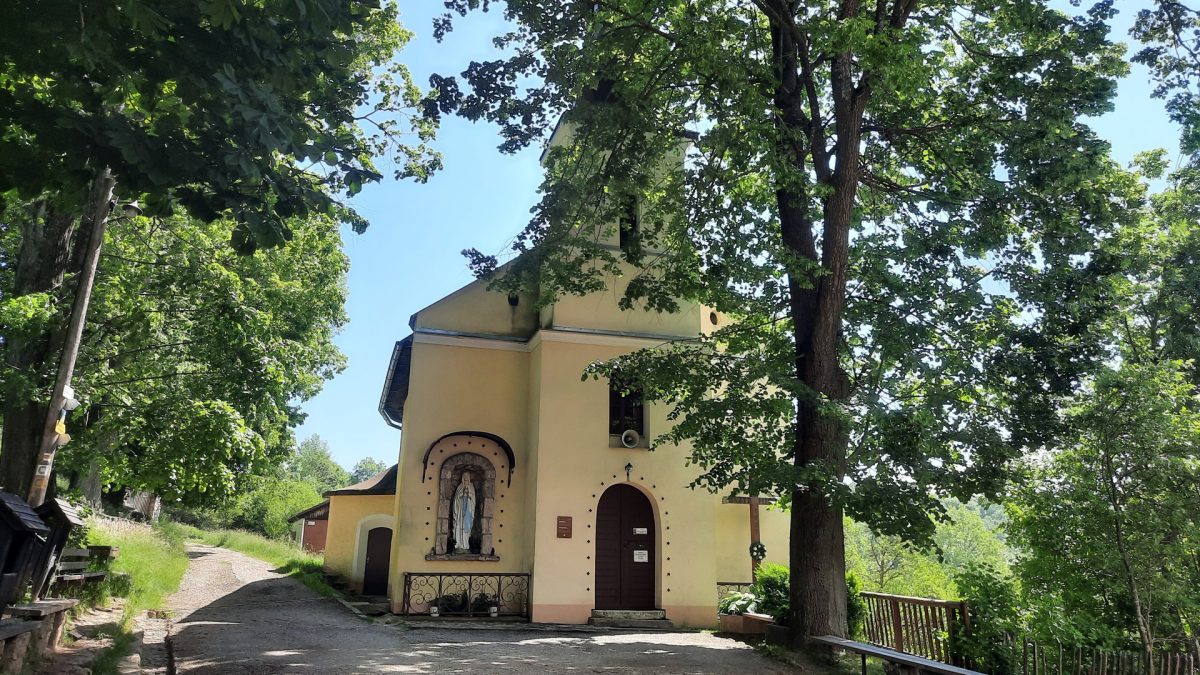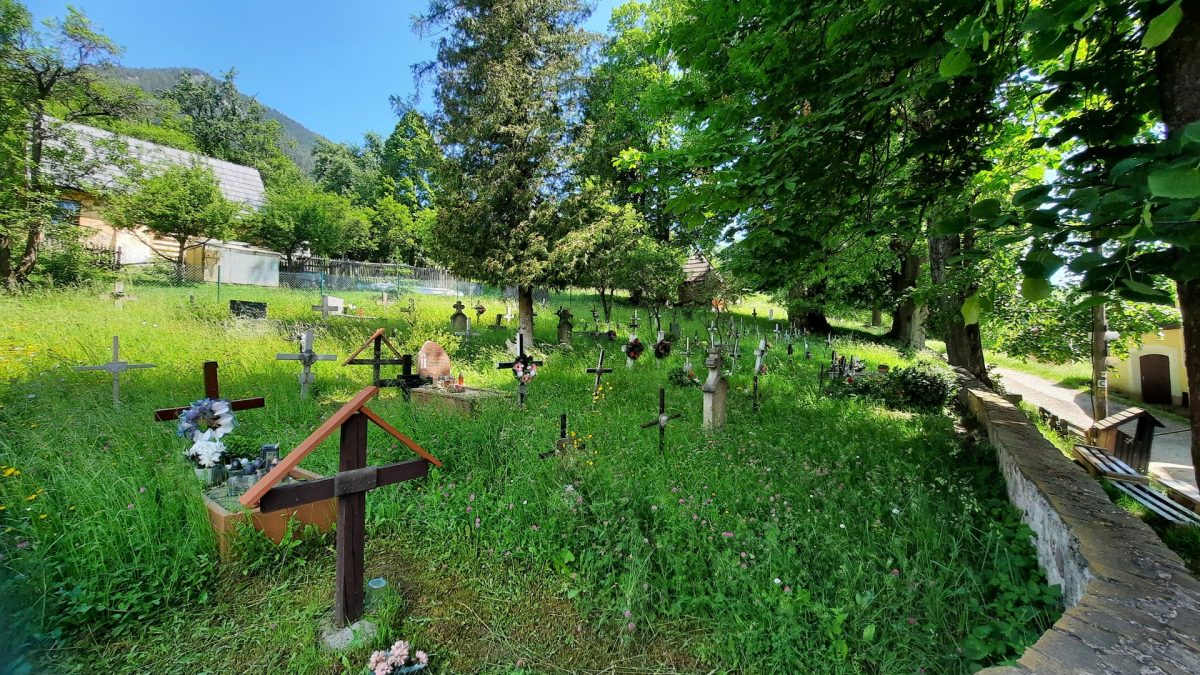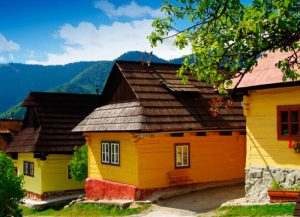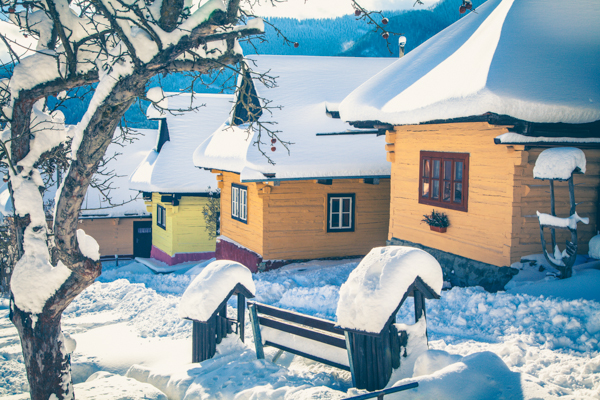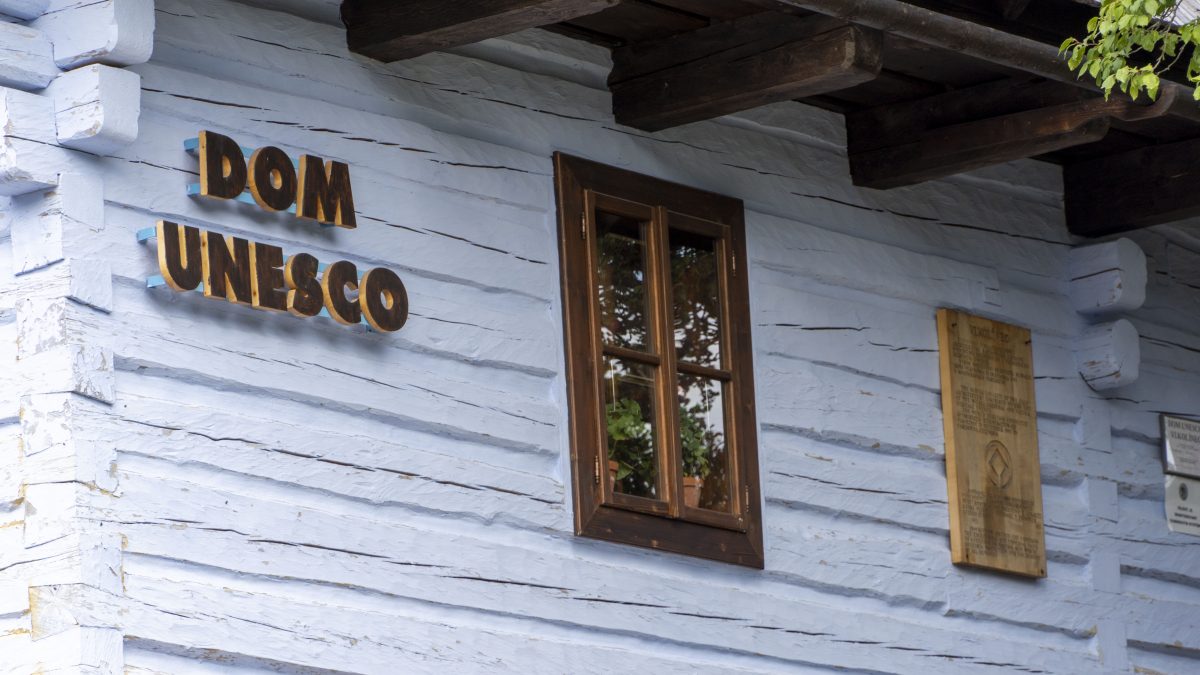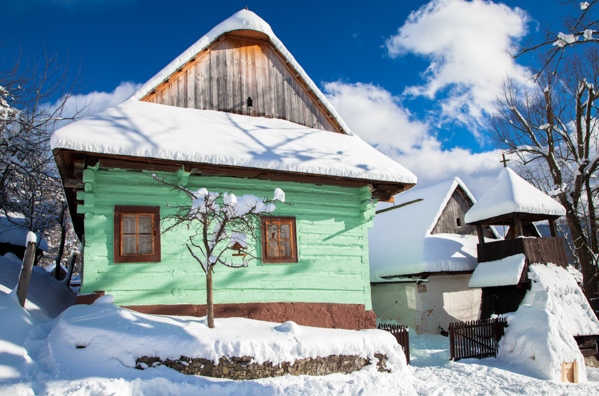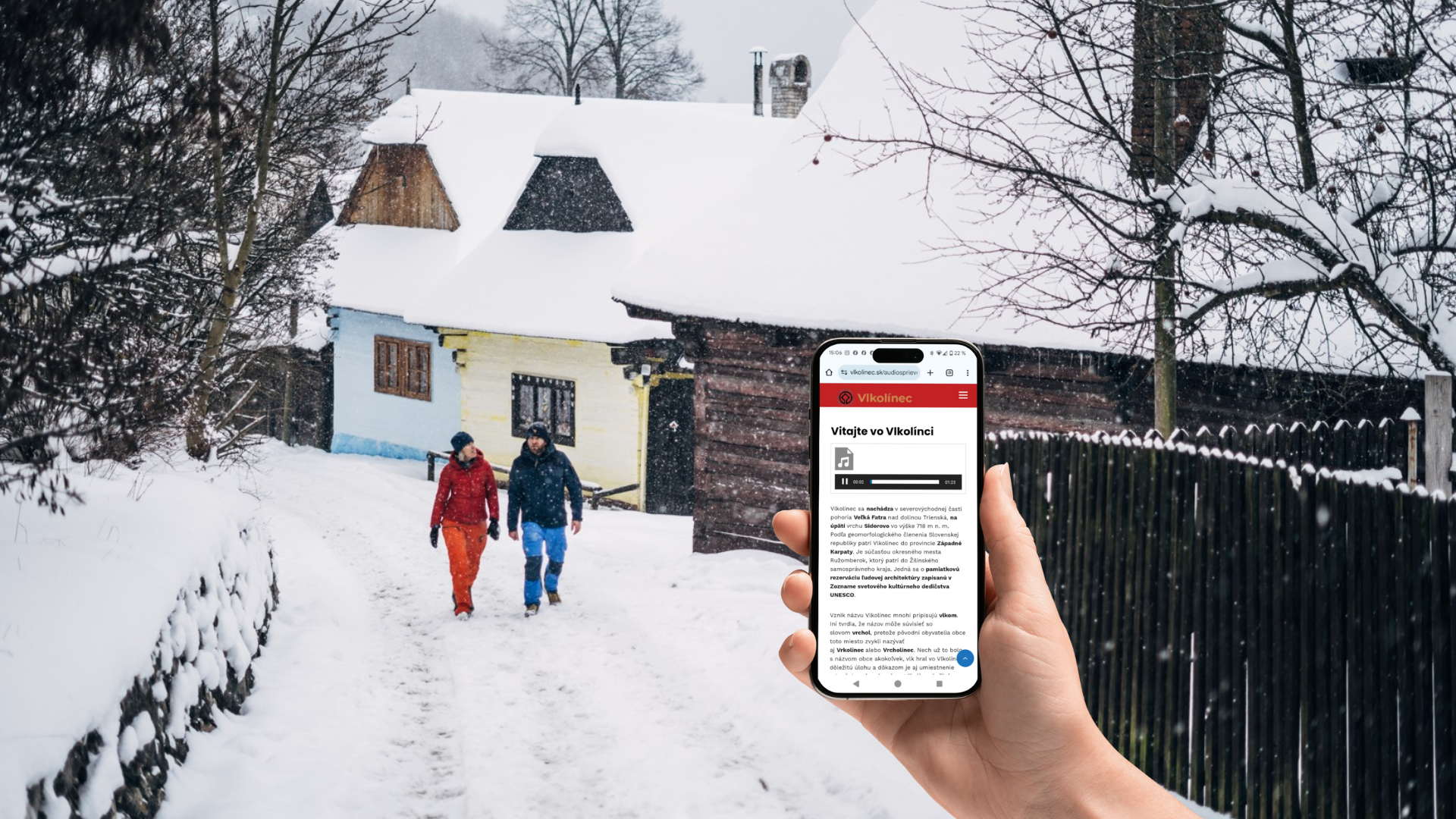
Guide to Vlkolinec
Get to know a unique place in Liptov – the lively village of Vlkolínec. Since 1993, the village has been part of the UNESCO World Cultural Heritage List for its strikingness and perfect fusion with the surrounding nature.
In order for you to experience your visit to Vlkolínec with all your senses, we arranged a meeting with Mr. Vlkolínsky, an old native who will accompany you during your visit to Vlkolínec. He will tell you what his childhood was like, what clothes his peers wore, where they went to work, where they went to study and pray. The walk is ready.
What can you see in Vlkolinec?
Vlkolínec is situated in the north-eastern part of the Great Fatra mountain, above the Trlenská Valley, at the foot of Sidorovo hill, at the altitude of 718 m.a.s.l. Based on the geomorphological division of the Slovak Republic, Vlkolínec belongs in the province of the Western Carpathians. It is a part of the district town of Ružomberok, which belongs in the self-governing region of Žilina. It is a monument reserve of folk architecture registered in the UNESCO List of World Cultural Heritage.
Many people think that the origins of the name of Vlkolínec is associated with wolves. Others suggest that the name might be related to the word “vrchol” (peak), as the original inhabitants of the village also used to call this area “Vrkolínec” or “Vrcholínec”. Whatever the case was when it comes to the origins of the name, wolves have always played a significant role in Vlkolínec, which is evidenced by the inclusion of these predators in the coat of arms of the village.
Vlkolínec is a live village, which has about thirty inhabitants today, many of them being the descendent of the original inhabitants of Vlkolínec. Many more people are tourists from the entire world, which are attracted by the uniquely isolated settlement, filled with traditional folk architecture and mountains surrounding the village. Welcome to Vlkolínec
Even though the finds in the vicinity of Sidorovo hill suggest the existence of a shelter in the Iron Age, the first written mention of the existence of a settlement in Vlkolínec comes from 1461. Therefore, the origins of the village are estimated between the 2nd half of the 14th century and the 1st half of the 15th century. Most likely, the village was set up by the inhabitants of the nearby district of Biely Potok.
The information about the size of Vlkolínec is also indicated in an urbarial report of the Likava Estate, based on which Vlkolínec consisted of four homesteads. According to population censuses, there were 117 inhabitants living in Vlkolínec in 1766, and as many as 334 in 1825.
In 1977, Vlkolínec was declared a monument reserve of folk architecture, and the uniqueness of this location was also presented in the List of Worldwide Attractions, which increased the interest in Vlkolínec on the international stage as well.
Vlkolínec received the greatest honour in 1993, when it was declared one of the monuments of the UNESCO World Heritage List in the city of Cartagena, in Colombia. Along with Banská Štiavnica, Levoča and the Spiš Castle, they were the first UNESCO Slovak monuments.
Today, Vlkolínec is a live village, which, due to its perfectly preserved residential unit, belongs among the best-preserved monuments of its kind in the entire Carpathian region.
The biggest source of work for the people living in Vlkolínec was the surrounding nature, which provided everything the inhabitants of Vlkolínec needed. Thanks to working all day on the fields and the pastures, the native inhabitants were not only able to have food, but also to have clothes. Thanks to working in the woods, they had wood – the most typical building material of Vlkolínec.
The work usually began around February, when the manure was carried over from the farm buildings to the fields, which were cultivated from the spring. Women were in charge of carrying the rocks away from the fields. Children also participated in the work. The ones of the school-age had free Thursdays, so they could help their parents on the fields with clearing the meadow areas. The most frequent crops were usually grains, potatoes and hemp. Vegetables were planted as close to the village as possible.
During the summer months, people mowed the meadows and stored the hay, which was carried over to the barns. In September, they dug up the potatoes, which were stored in potato pits of the individual buildings. The larger potatoes were eaten, the smaller ones were used as feed for the farm animals. A portion of the potatoes was used for replanting.
One of the traditional sources of livelihood was sheep farming. At the turn of the 19th and the 20th centuries, there were 1200 sheep kept in Vlkolínec. For the inhabitants, sheep farming was advantageous especially due to its multi-functionality. The sheep provided not only milk, but also wool, so for the local people, they were the source of food as well as clothing.
The inhabitants of Vlkolínec used to work in the area of agriculture, farming, sheep farming, cattle breeding and woodcutting. On the terraced fields in Vlkolínec, they cultivated cereals, usually barley for flour and groats and grain for poultry. A crop of high importance were potatoes, which became an essential part of the meals.
Among fruits, particularly common in Vlkolínec were the resistant varieties of plums and pears, which were dried in the bread oven into cookies. However, the climate in the Liptov region was never ideal for the fruit cultivation to expand.
Although the nature provided the inhabitants with everything they needed, many people living in Vlkolínec used to make extra money selling raw ingredients at the markets in Ružomberok, which were organized every Thursday. Prior to the market day, the women used to prepare curd, butter, eggs, and they carried it, thoroughly stored in a basket and tied to their back, to Rínok, which was the market street of the town.
The clothing of the original inhabitants of Vlkolínec was made from materials they were usually able to fabricate themselves. One of the most important materials was fibre flax, which was cultivated in Vlkolínec. In particular in winter months, an important role in terms of clothing was played by fur,
which was obtained from Wallachian sheep, known for their thick and cold-resistant wool. Shoes, belts and other accessories were made from leather, which the people in Vlkolínec obtained using their own strength and wit, without needing to buy them.
Men used to wear humble clothing, and the function of their clothing was more practical than aesthetic. An essential part of a man’s clothing was a shirt and pants, fastened with a leather belt. Particularly valuable was a hat, which served as protection from frost during winter and from sunshine or mosquitoes during summer.
Women’s clothes were of a more complicated composition. They used to wear an underskirt, a shirt, an apron, and a skirt. A bonnet on the head was only worn by the women who were married.
It is also true that the way of life of the people in Vlkolínec was closely connected with the surrounding nature, which they did not try to change, but they used it with respect and cared for it in the way which allowed the nature to continue to offer its gifts.
In terms of architecture, Vlkolínec is a typical settlement of the northern parts of central Slovakia. The typical buildings are log houses with long, often shared yards, built behind or opposite one another, which, due to their natural setting, do not disrupt the natural harmony. The merging with the surrounding nature can be best seen from the slopes of Sidorovo hill. The most typical building element of Vlkolínec is wood. The residential buildings as well as the farm buildings are made of logs, the walls of the buildings are often coated with clay and whitewashed with lime. The final buildings of the yards are usually barns. The majority of the original buildings were built around the middle of the 19th century, and the majority of the residential buildings consist of three rooms, with relatively high underpinning, but without cellars. Their role was filled by the so-called “potato pits”, which are usually located in a room inside the house. In terms of location of the individual rooms in a traditional house in Vlkolínec, there is an entrance room – hall, from which you can enter the room on one side and the storage chamber on the other side. The largest area was the room, which was the centre of all the family life. As the only living area, the room was heated, because there was a furnace with a fireplace. The entrance hall served the function of an entrance area and a kitchen as well. There was an open fireplace used for cooking. The chamber served for storage of food, work tools and wooden dishes. The roof frame has collar beam structure, roofs are of saddle type, covered with wooden, manually hewed shingles from soft wood, which had durability of about 30 years. The typical colour of the log houses in Vlkolínec is white, yellow, light ochre and blue, and the skirting is usually of a different colour than the house. The inner walls were coated with clay and painted after drying.
To this day, there are 45 farmsteads preserved in Vlkolínec, which consist of residential houses and farm buildings. In urban terms, we are talking about simple whitewashed log houses, which formerly lacked even a chimney. The central axis of Vlkolínec is a creek, which surfaces in a slope of Sidorovo. At the bottom end of the village, there is a municipal stone granary, and there is a split in the communication in the centre, which creates somewhat of a square, with the characteristic Vlkolínec building – bell tower. The bell tower was built in 1770 and it functioned mainly as a time-keeping instrument, because it was used for announcing of the time of prayer. Its secondary function was to publicly announce deaths of the inhabitants. It is a square wooden building with a stone underpinning and a shingle-covered roof, with an acoustic opening and a bell. It is the oldest preserved building in the village and many consider it its central landmark. Among other significant buildings, we could mention, in particular, the municipal well from 1860, and the people’s school from the 19th century, which played a significant role in the past, and which replaced the original school from the 17th century.
The original school in Vlkolínec was recorded in the 17th century. It is described as a wooden building located in the centre of the village. The population of Vlkolínec grew over time, and that is why in the 19th century, it was necessary to build a new school, which would, especially in terms of space, meet the demands of the school system at the time. That is how a one-classroom school made of brick was built in the 19th century, where the mandatory attendance for the children of Vlkolínec was 6 years at first, at the time of Austria-Hungary, and later, at the times of the Czechoslovak Republic, it was 8 years.
The school, where the students of all grades were taught in one classroom, served its purpose until 1944. After that year, the classes were held at the elementary school in Biely Potok.
At present, the school is used as a folk-art gallery.
The Church of the Visitation of Virgin Mary in Vlkolínec is one of the most characteristic examples of sacral architecture in the village.
The church in Vlkolínec was built in 1875 as a chapel for the cemetery, which belonged under the parish of Ružomberok. It is built in close vicinity to the former main entrance to Vlkolínec. It is a one-nave building in the neoclassical style, with a tower built into the facade and an added sacristy. Inside the church of Virgin Mary in Vlkolínec, there is a Prussian Arch and a sanctuary with an irregular pentagonal ending. To this day, there are masses held in the church on Sundays and on mandatory holidays, as well as occasional wedding ceremonies.
Today, the Church of the Virgin Mary in Vlkolínec is a national cultural monument. Visitors may also notice a votive sandstone plate in the facade of the church, dedicated to the most famous native, reverend Pavol Horský, from 1995, which was made by Martin Bišťan and Stanislav Šutaj.
In addition to the church, other sacral objects are the wooden bell tower and the cemetery.
Vlkolínec is undoubtedly one of the most beautiful locations in Slovakia. Due to its characteristic, isolated architecture, the experts consider it one of the best-preserved locations of folk architecture one can visit in Europe.
Vlkolínec attracts to its heart the enthusiasts in many different fields. For tourists, there are plenty of mountains offering beautiful views of typical Liptov nature. For the lovers of architecture, especially the folk architecture, there is a collection of buildings in the traditional folk style. Those who enjoy the time in nature will be pleased with the meadows full of plants and flowers of all colours, and, last but not least, families will find a lovely place for relaxation and fun in touch with the traditions.
Whoever visits Vlkolínec once, will return sooner or later. And it’s not surprising.
Where to eat
Where to have fun
Videos
Watch videos that will introduce you to the customs and traditions of the Liptov region. In them you will find footage from the salaš, but also the magic of creating folk costumes.
The guide to Vlkolínec is realized with the financial support of the Ministry of Transport of the Slovak Republic.
Hlas Ján Kožuch
Scenár Viktor Mydlo
Zvukový inžinier Marek Masarik

